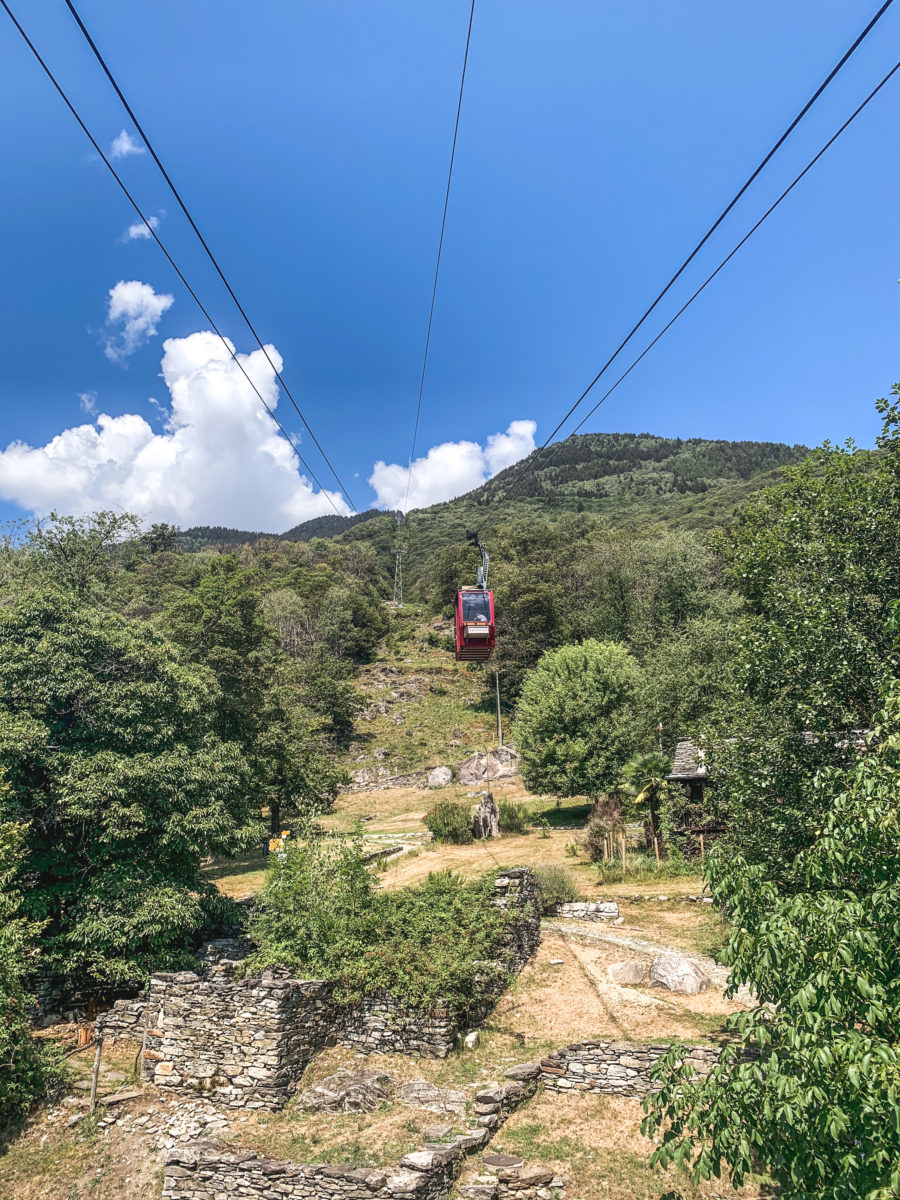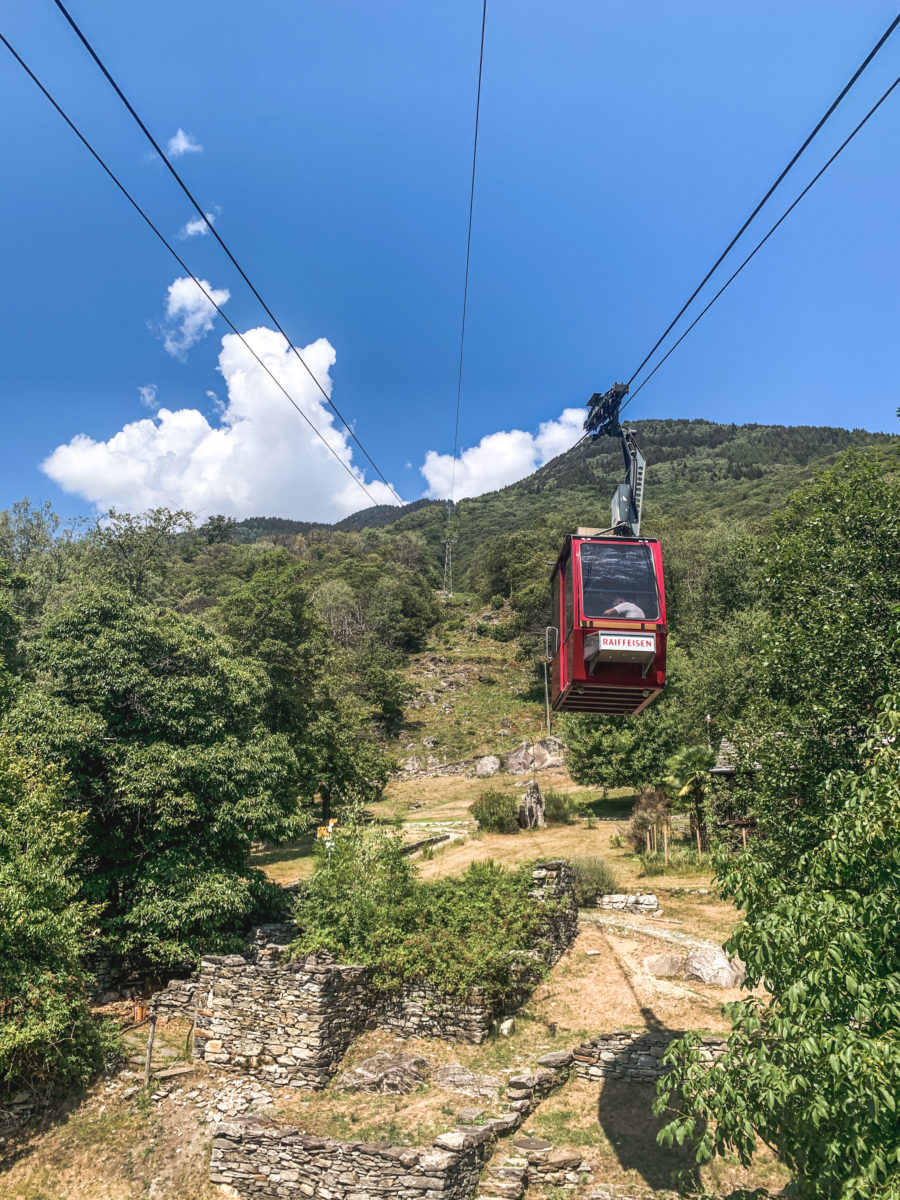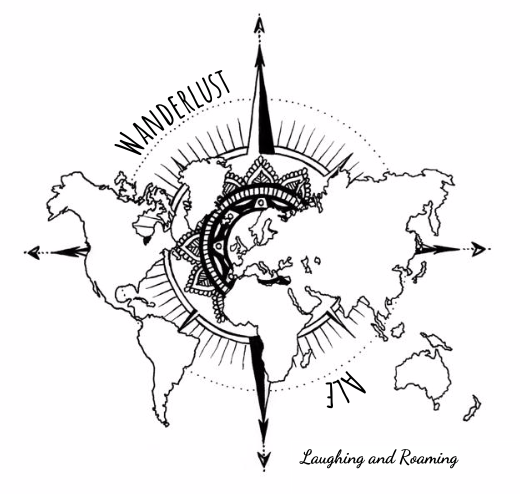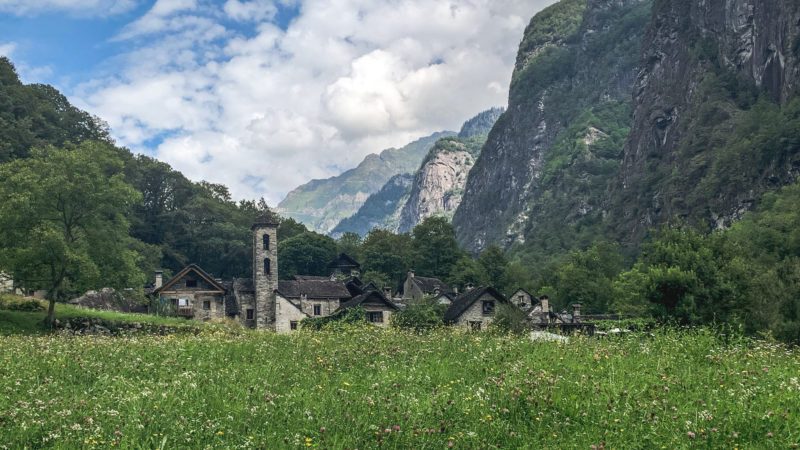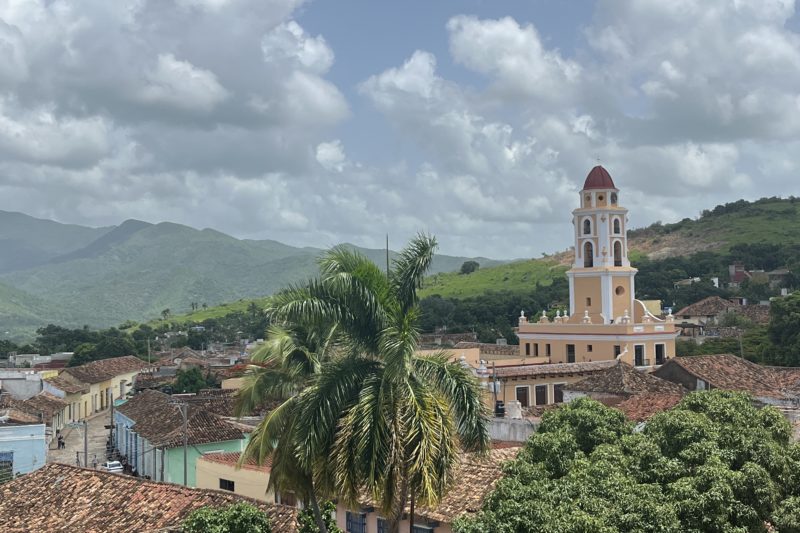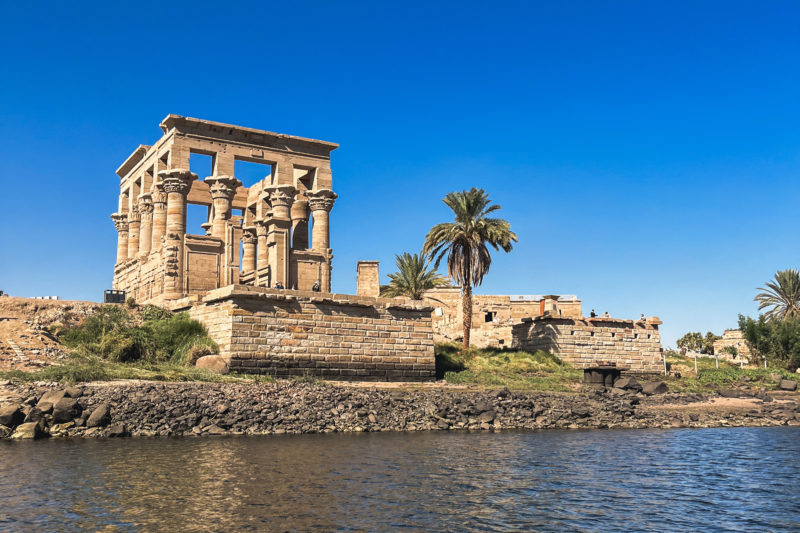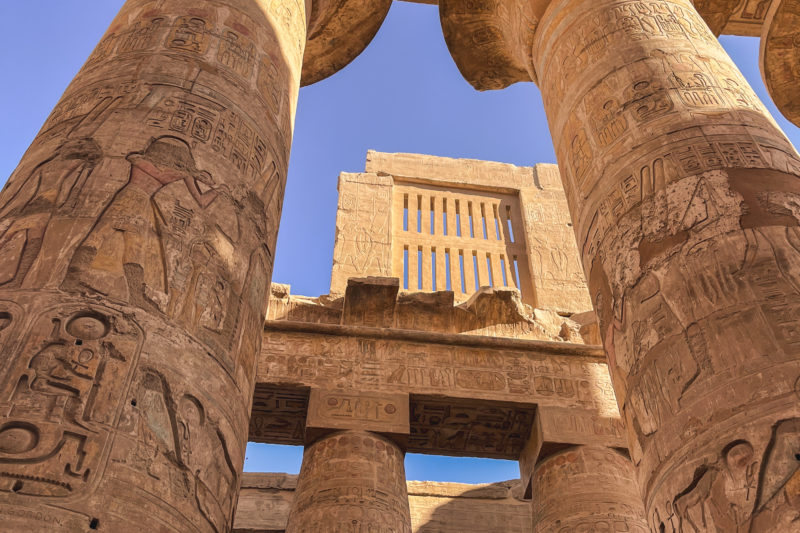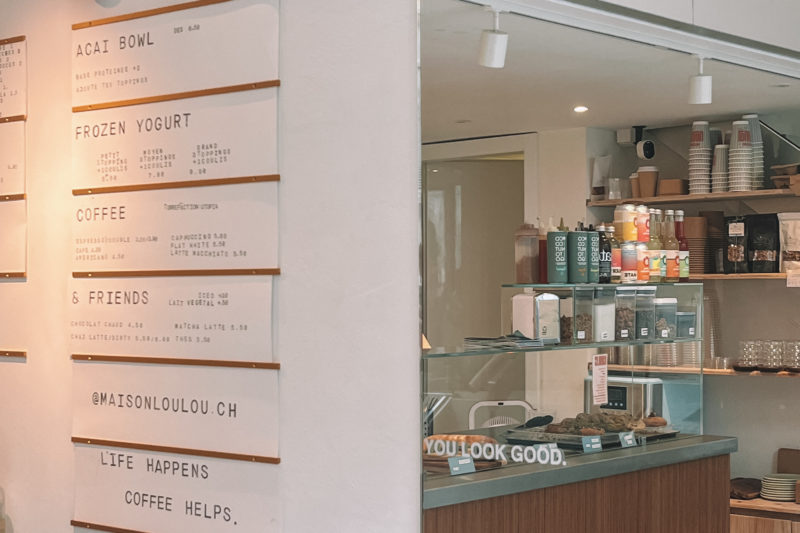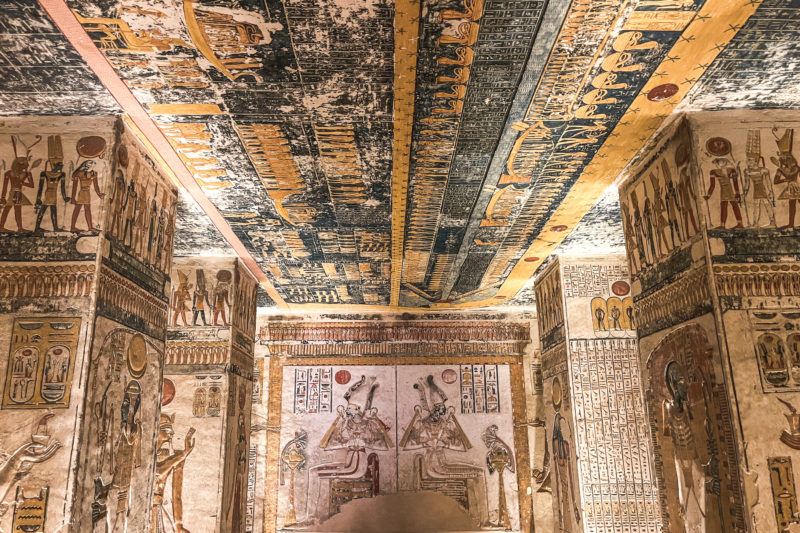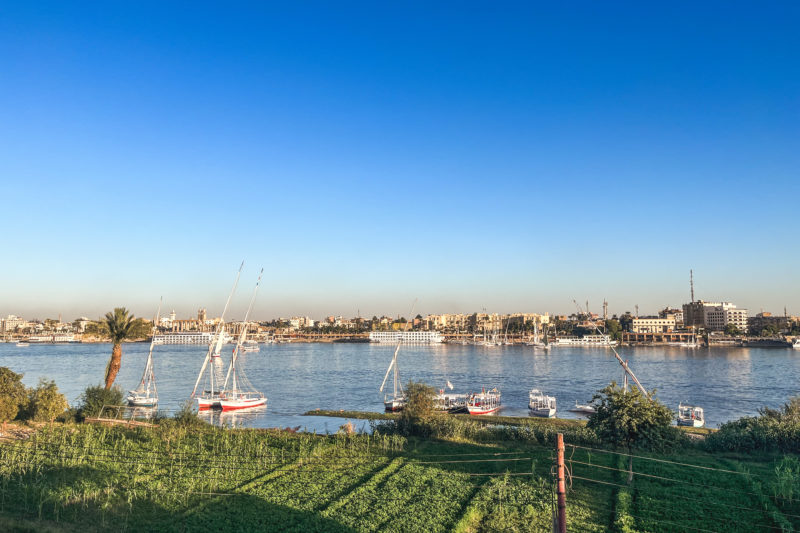Ticino, land of water. There’s nothing wrong with this, as the Italian-speaking Swiss canton is full of beaches, rivers, gorges and waterfalls. It is enough to develop a cascade of memories in Ticino.
With its two lakes (Lugano and Maggiore) and its many valleys, the Italian-speaking part of Switzerland is a canton to be discovered and a favourite place to get away for German-speaking city dwellers. A place which for them does not seem so out of place, as the Swiss-German language has become common in Ticino (which is a pity, as Italian is much more melodious).
In spite of this, Ticino is for me a Swiss gateway to the country I particularly like, Italy. The cities of Lugano, Ascona, Bellinzona or Locarno are certainly delightful to discover, but it is the abundant nature and in particular, the waterfalls scattered throughout the canton that are worth the trip.
I have discovered 6 places in Ticino that are a little off the beaten track; waterfalls of pleasures. I promise.
Faido
Whether you take the Gotthard Pass or the longest tunnel in the world, also called the Gotthard, it is in Airolo that every visitor enters the canton of Ticino. If you come by car, I recommend you take the famous “Tremola” road, which winds vertiginously between Airolo and the St Gotthard Pass. An impressive way to arrive or return from a stay in Ticino.
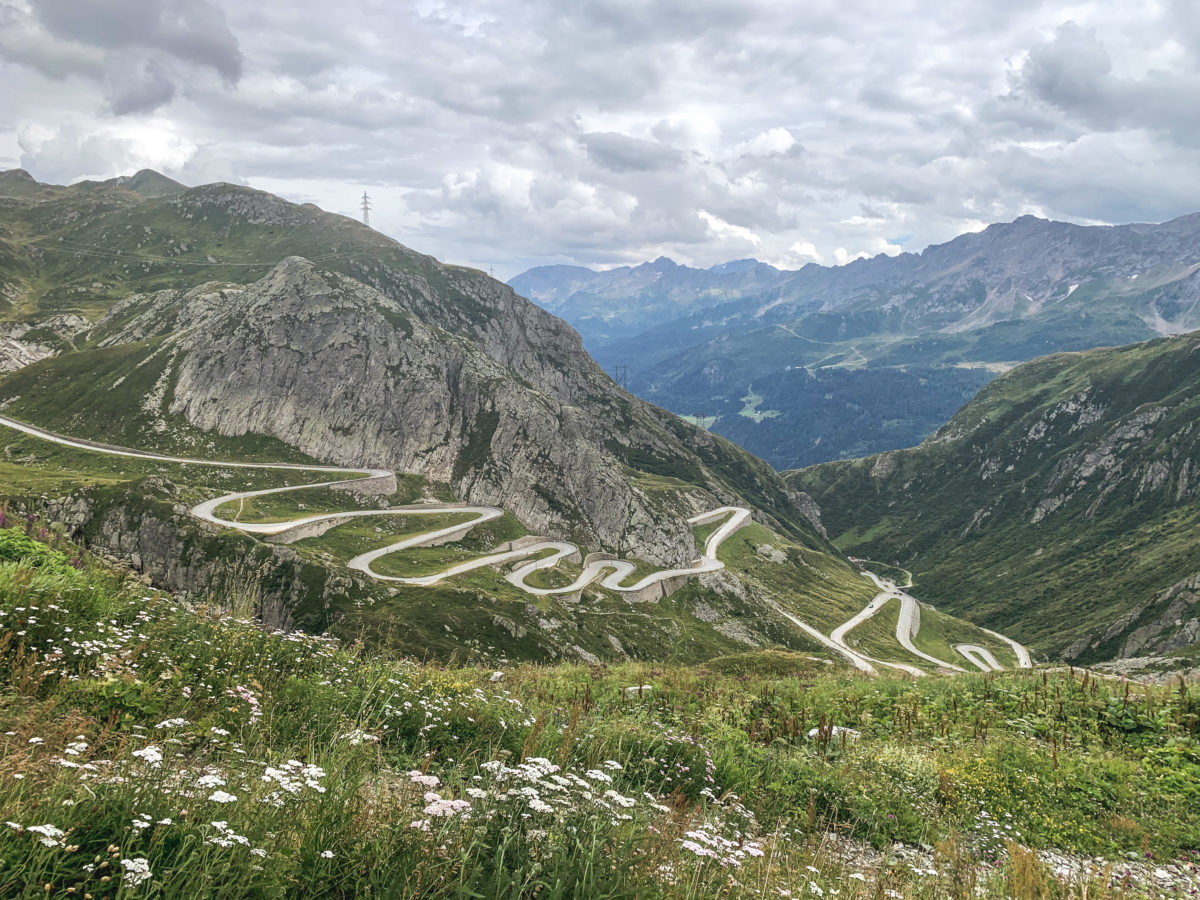
We are in the Leventina district, the capital of which is Faido, which is the first place I suggest a stop in this article. The village itself is not very interesting, it is the surrounding nature that makes Faido an optimal starting point to discover Leventina.
If we stopped on our journey in Faido, it was to discover the Piumogna waterfall. It is one of the prettiest in the canton, thanks to its natural pool which allows you to bathe. At 43 metres high, it is easily reached on foot from the village. It is in the centre of the village that we parked, not knowing the way to get there.

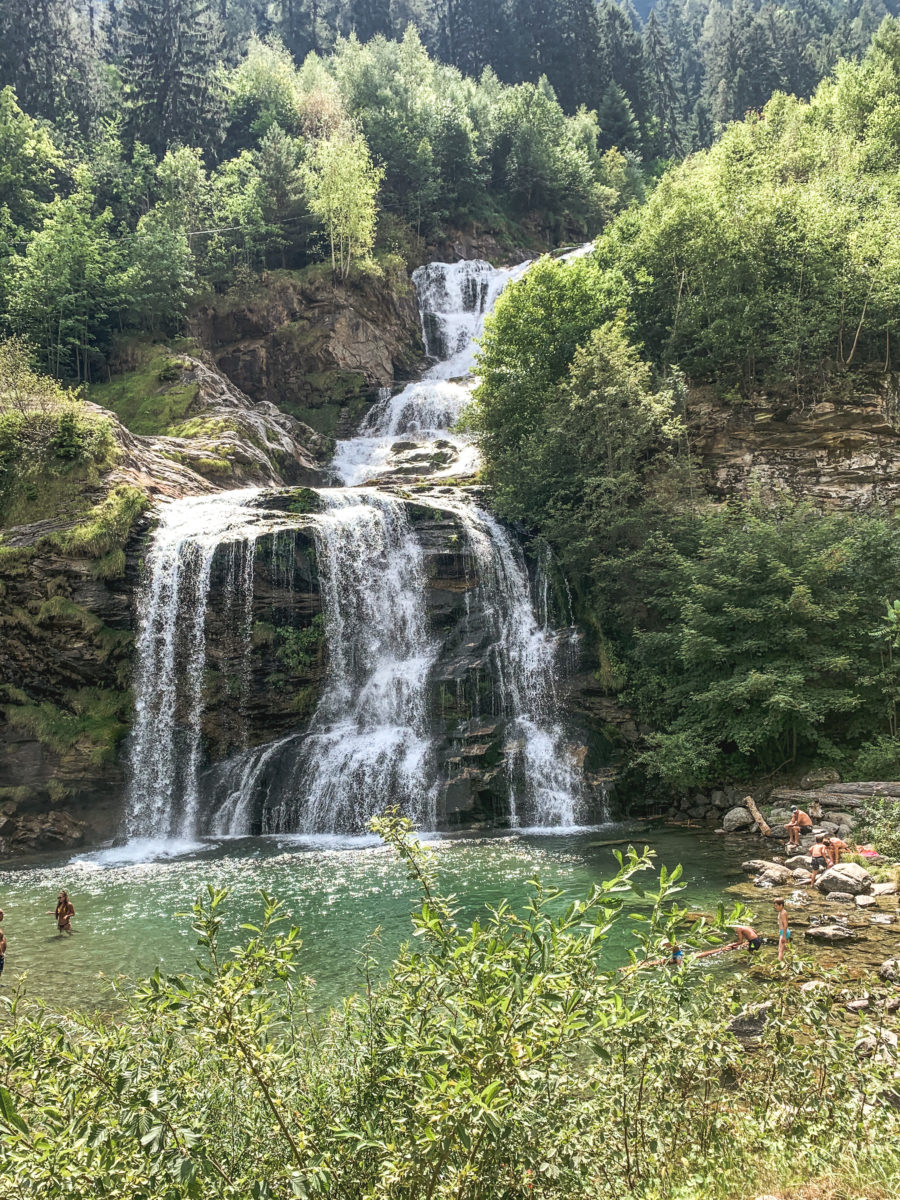
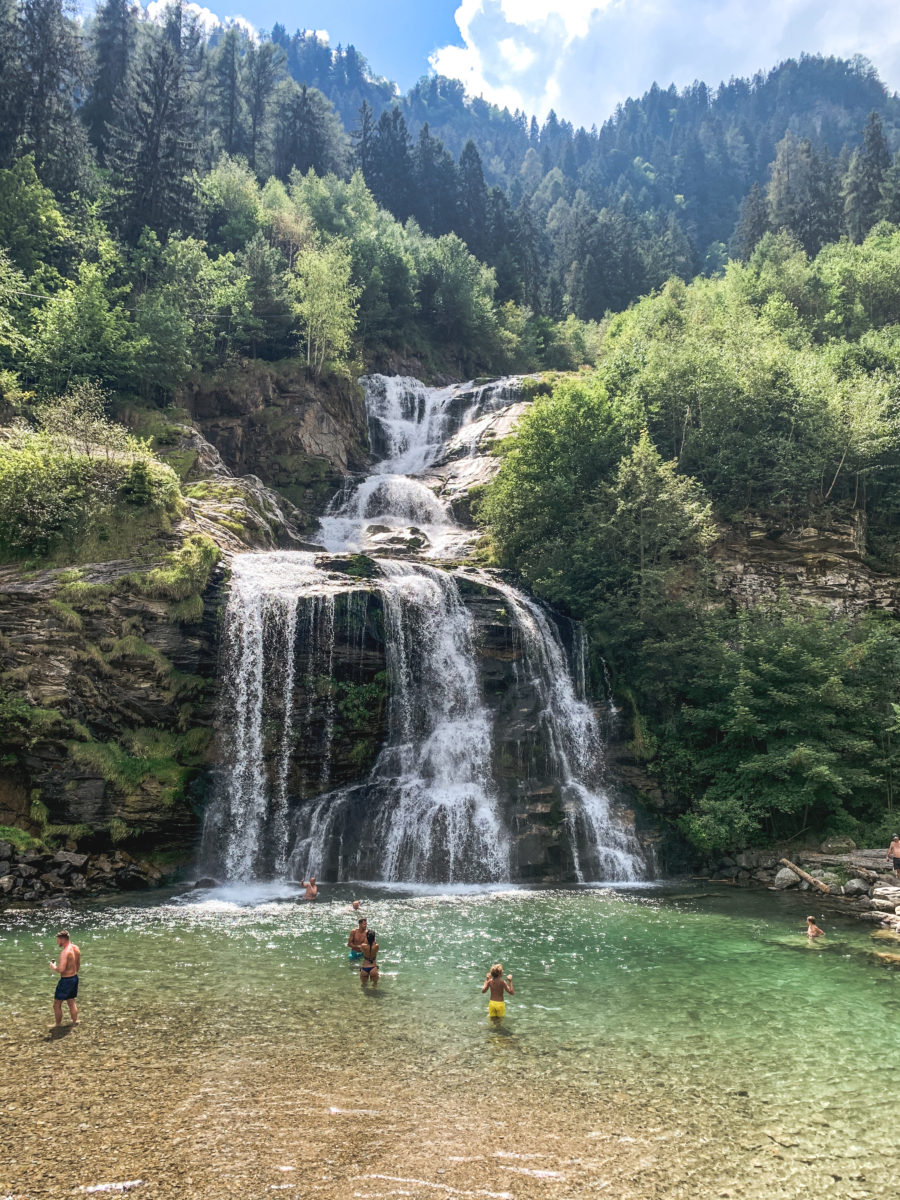
There are parking spaces near the river and the bridge that you have to cross before walking for about 5 minutes to discover the beautiful waterfall. The waterfall is a good place to swim and a favourite spot for Ticino families to have a picnic by the water.
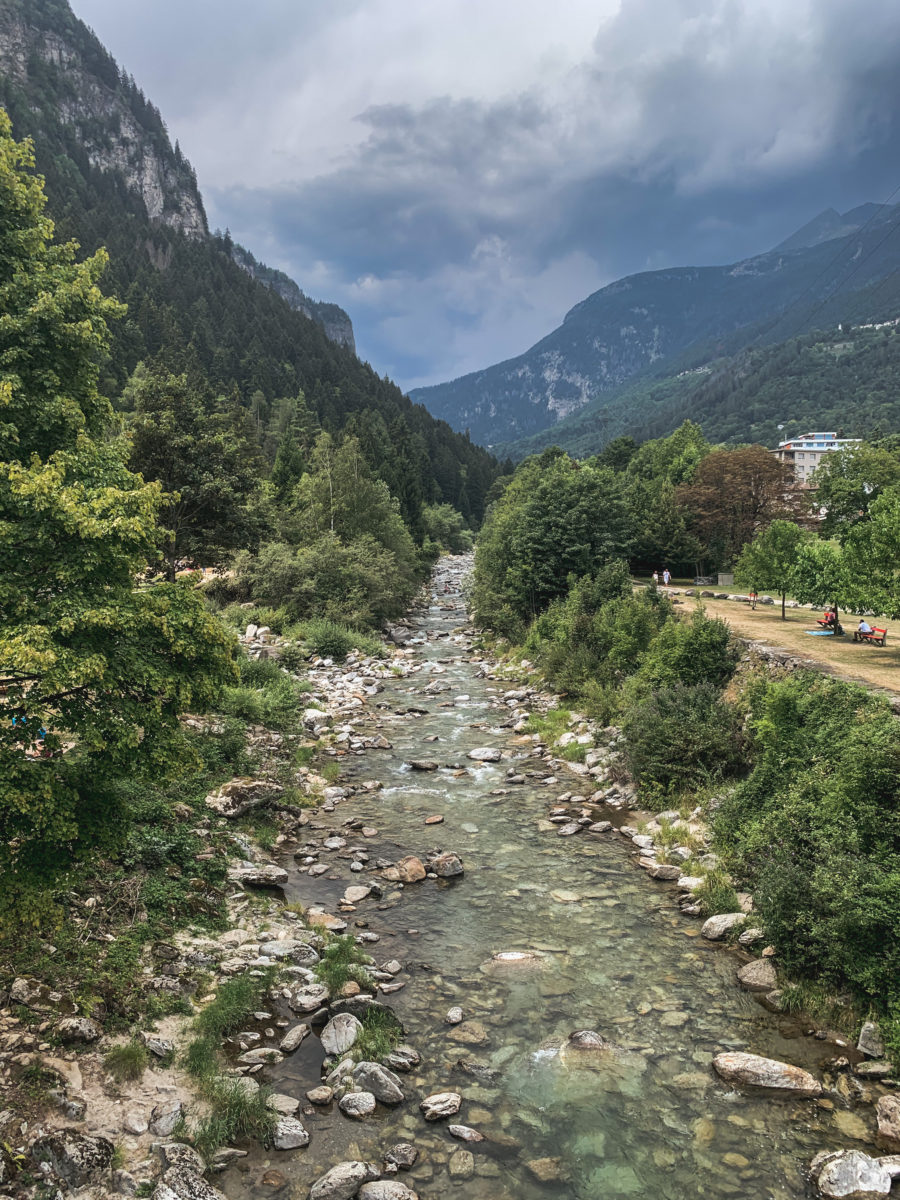
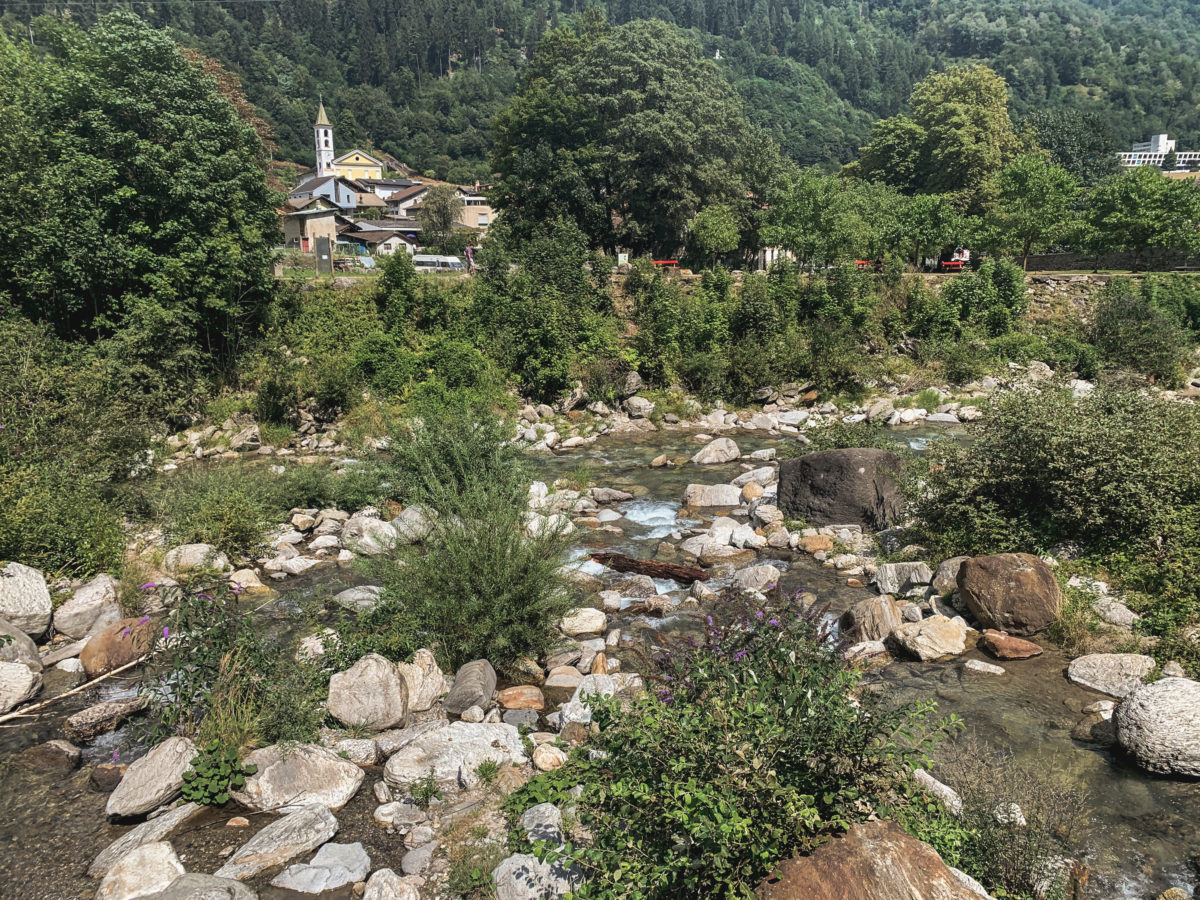
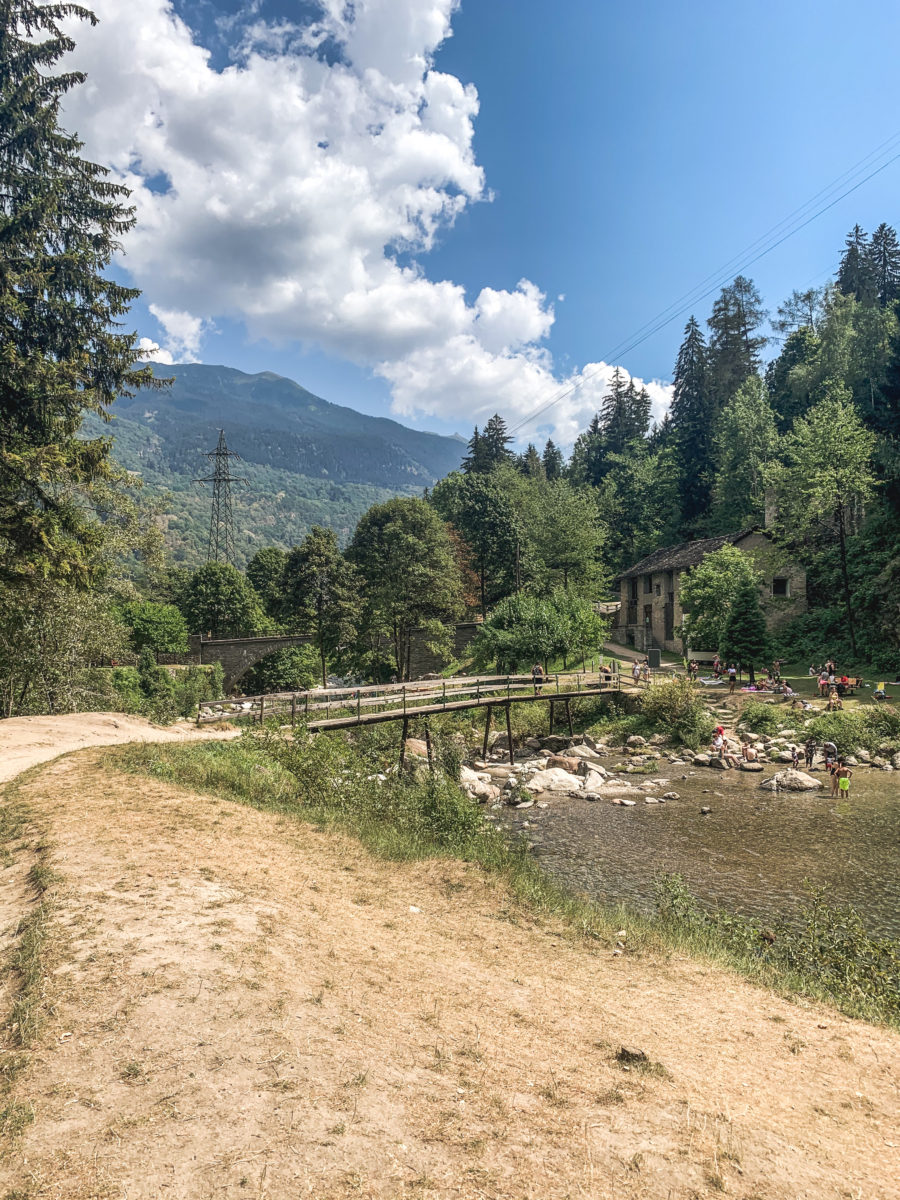
Don’t hesitate to hike to discover the Piumogna river from a higher altitude, which flows into this beautiful waterfall. Moreover, another nice escapade from Faido is to take the cable car to Pianaselva. This is a place I would like to visit, especially for its agriturismo of the same name, which will allow you to have a peaceful retreat for a few days and enjoy the pure air of Leventina.

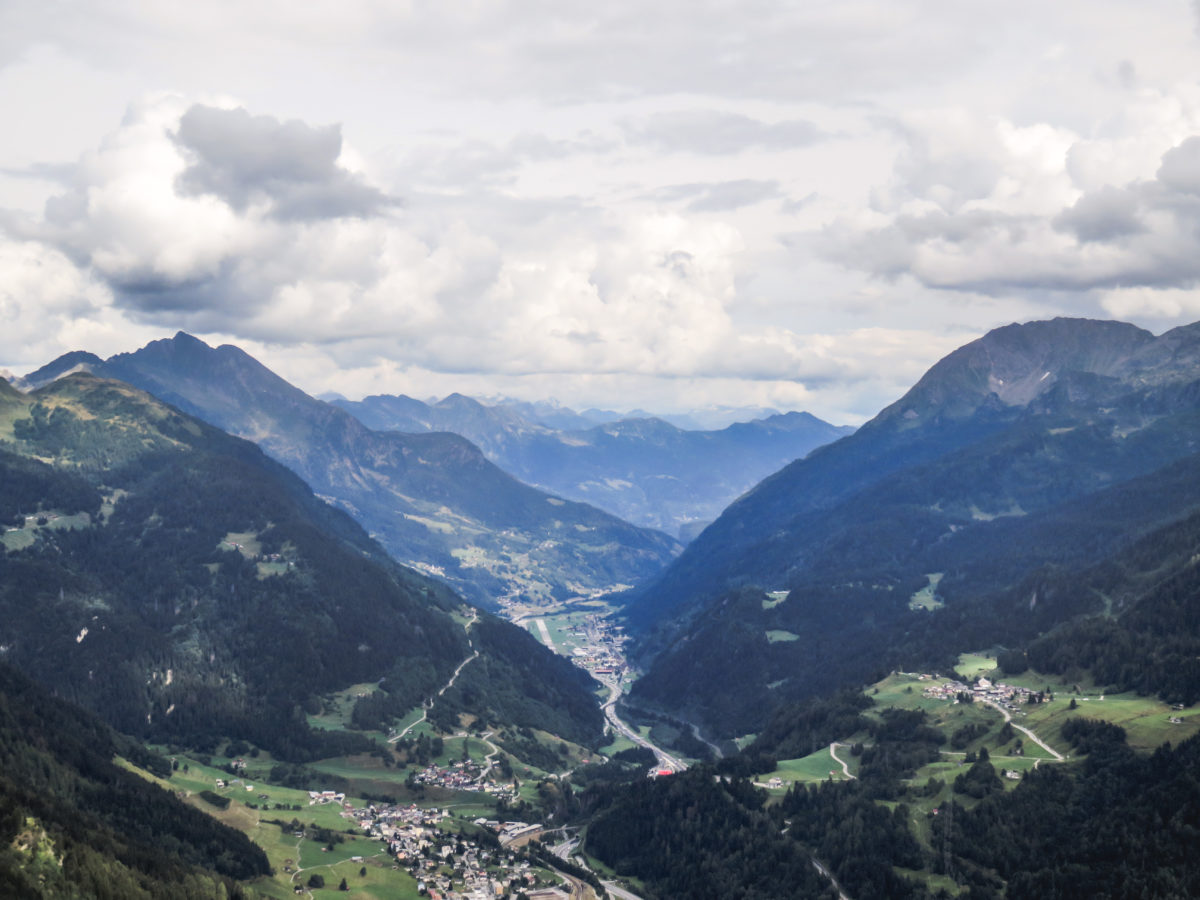
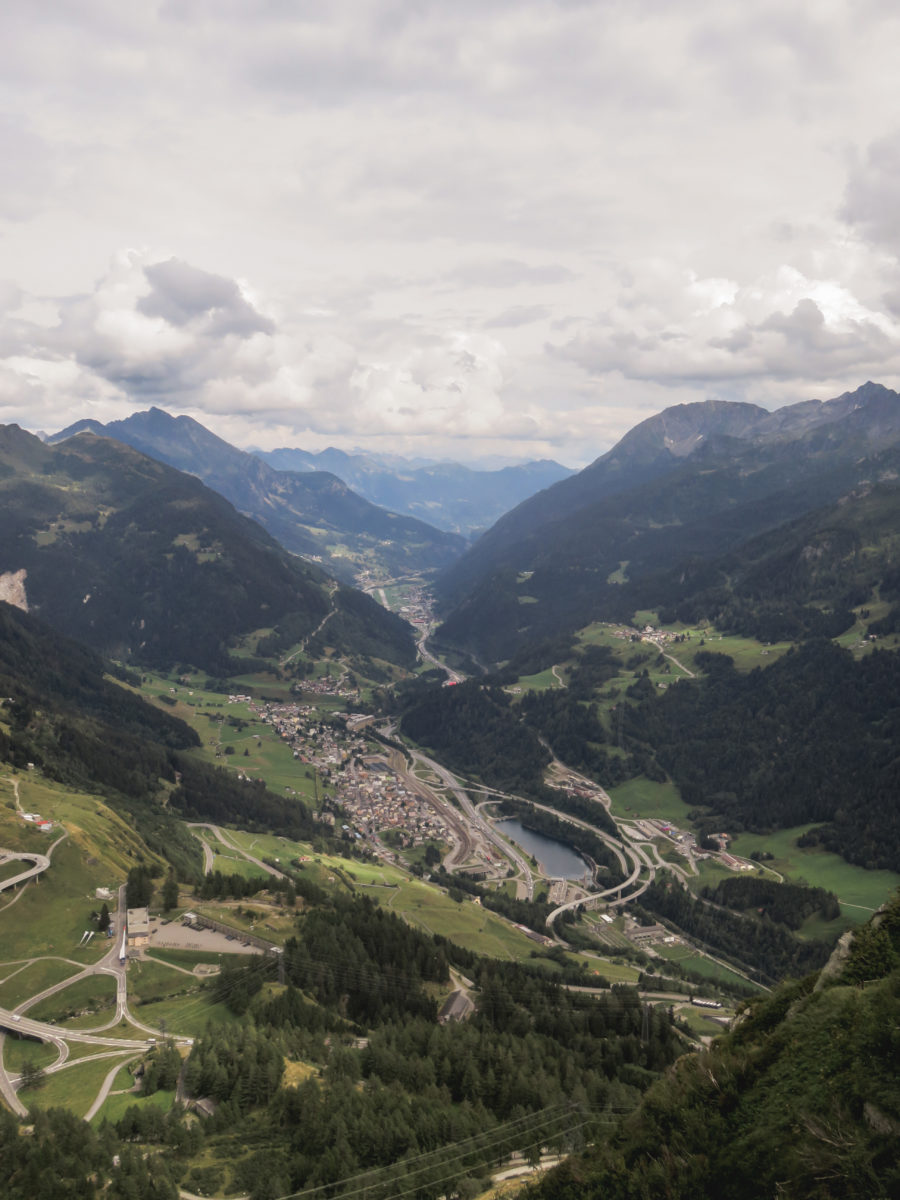
The hamlet and waterfall of Foroglio
Head for the Valle Maggia, which is well known as a tourist destination in Ticino, to discover Foroglio. The Maggia Valley is the largest valley in the canton of Ticino. Maggia is the name of the river that crosses it and also of the main town, located at the bottom of the valley. To reach the Foroglio area, you first have to go up the whole Valle Maggia and arrive in the Val Bavona. The closer we got, the more I heard the growing sound of splashing water.
We were thus in a picturesque natural setting to admire one of the most beautiful waterfalls I have ever had the chance to see.
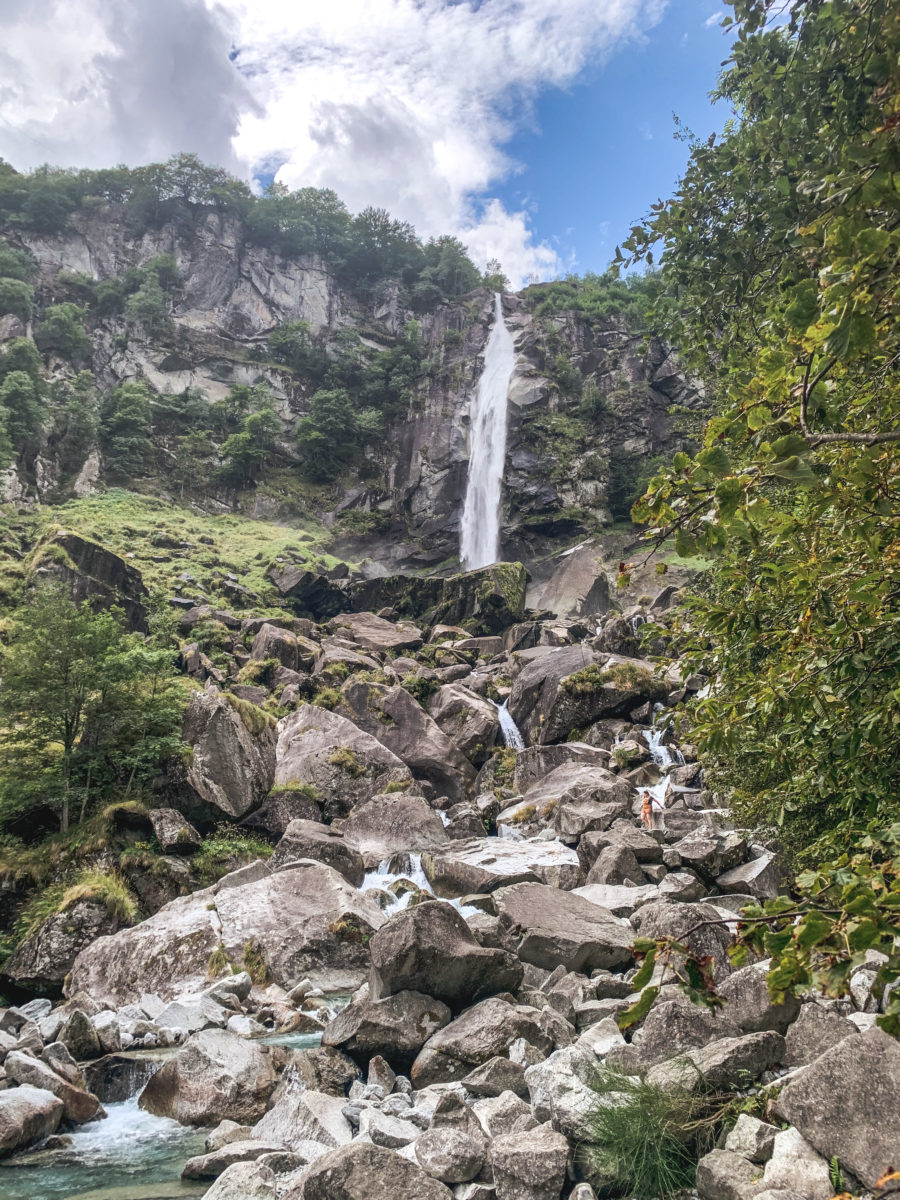
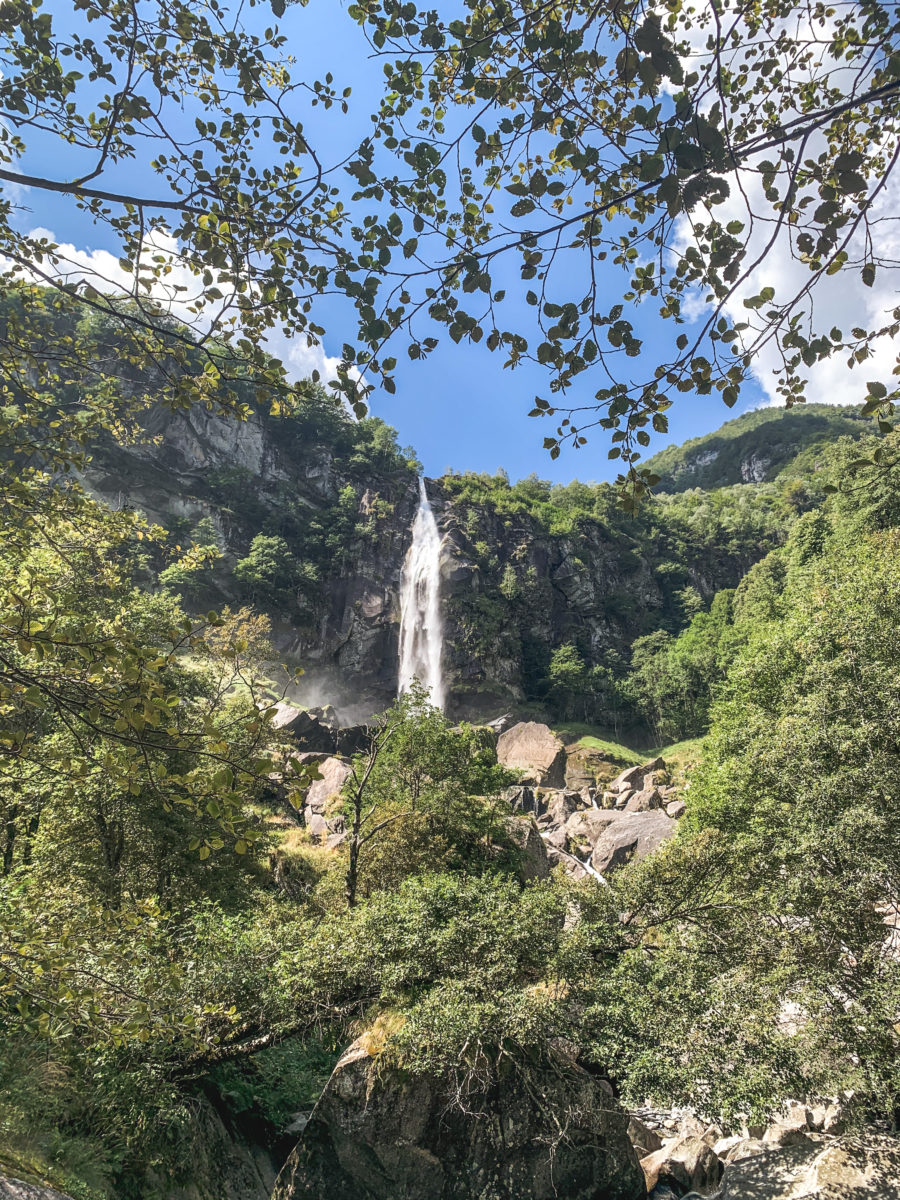
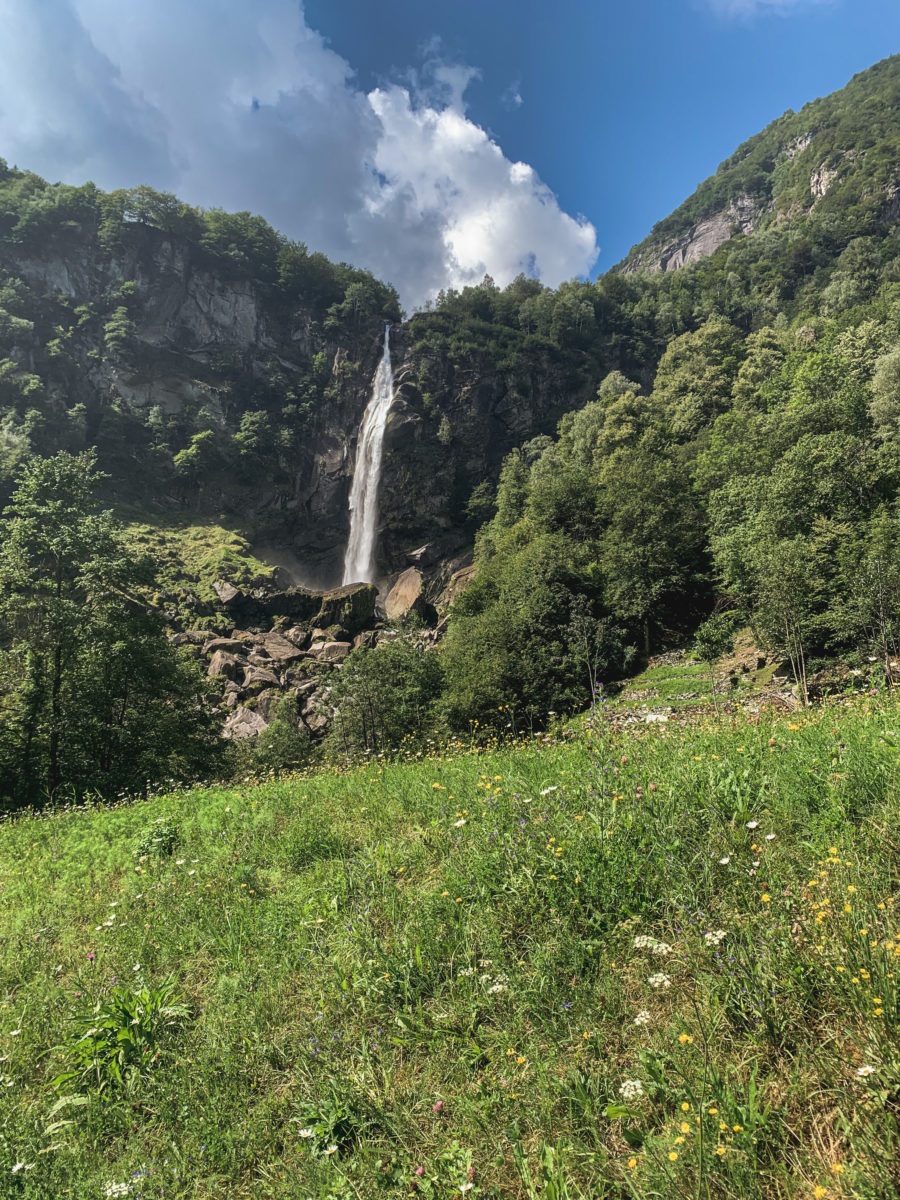
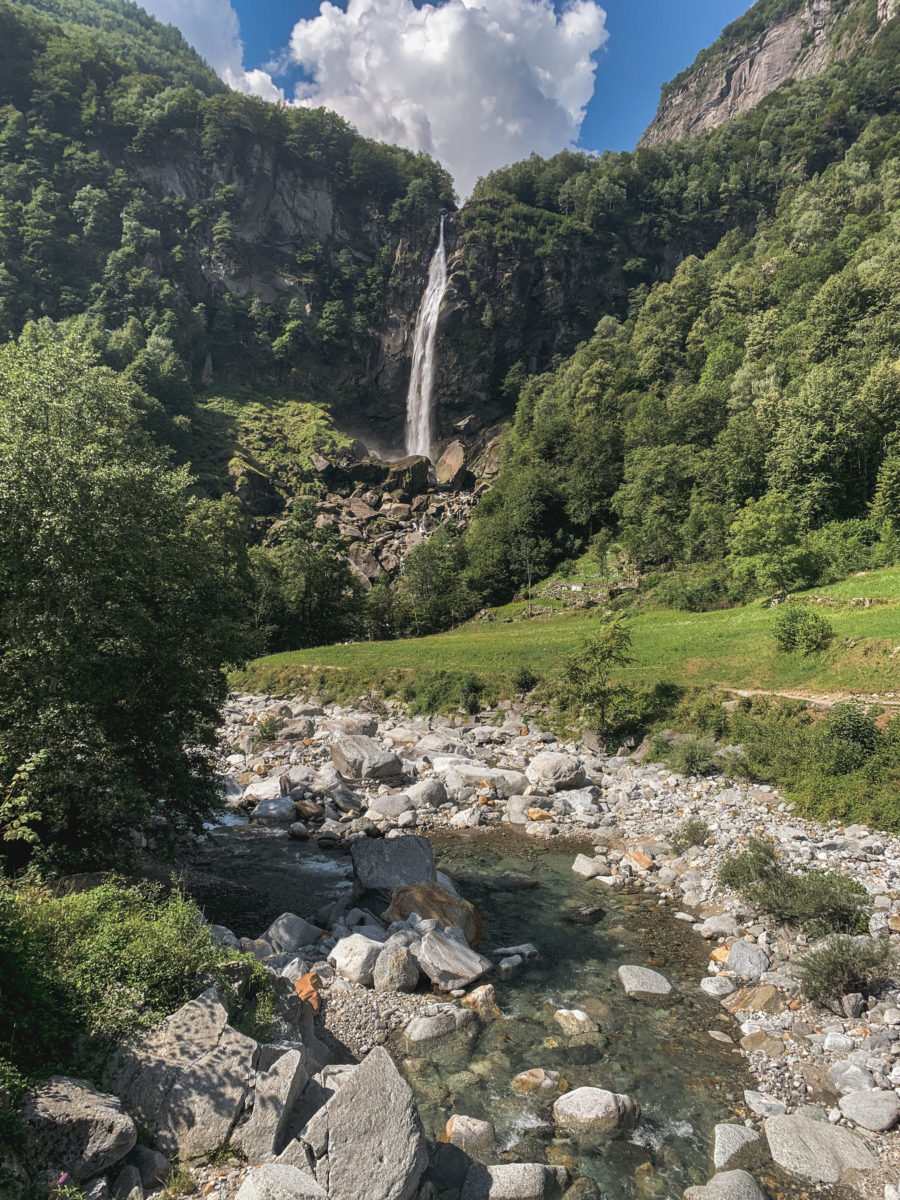
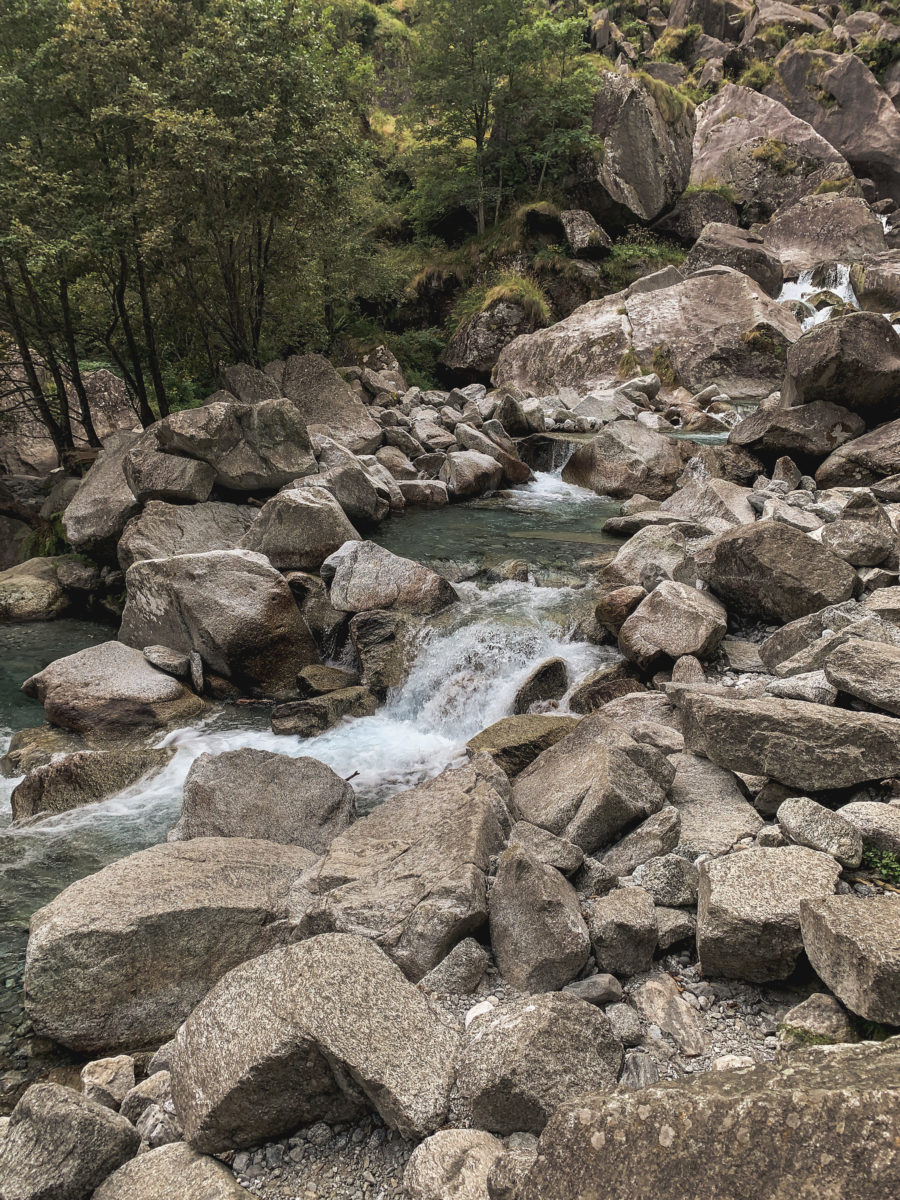
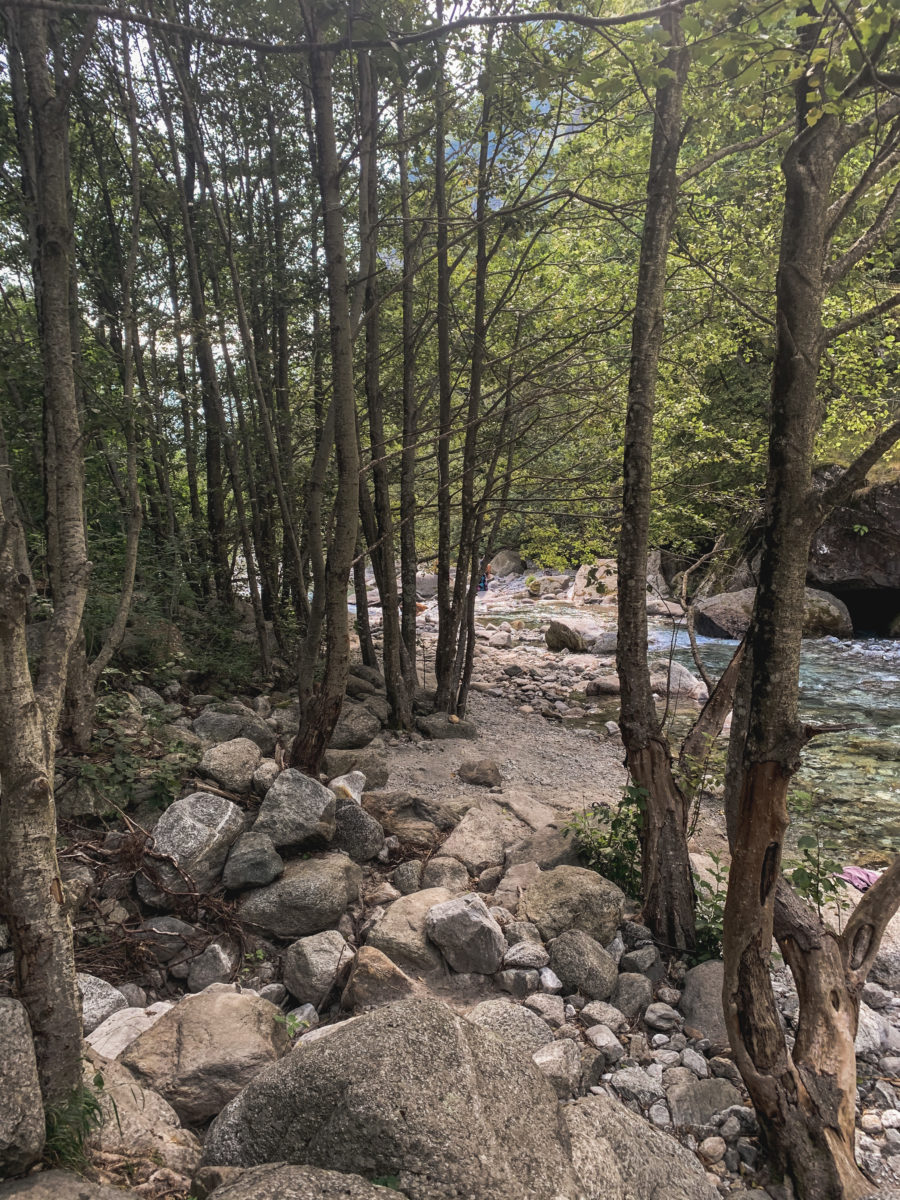

A magnificent 2-hour walk up the waterfall, 108 metres high, offers a stunning view of the valley. Not being in the company of people eager to hike, we simply went to refresh our feet and take some pictures at the foot of the waterfall.
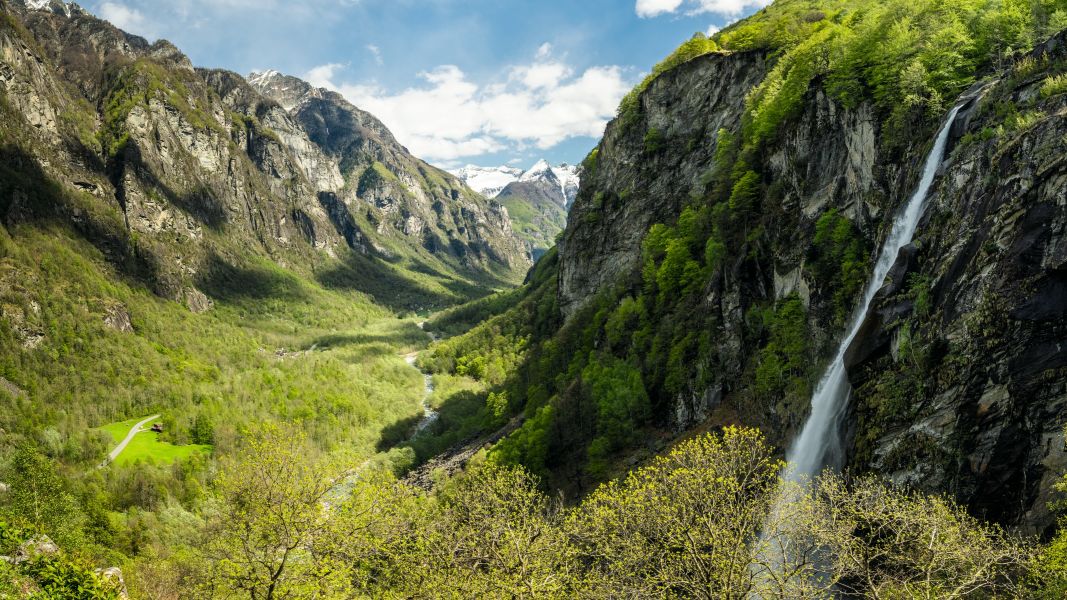
It has become a very popular place for influencers with the swing that is there and certainly makes for a nice photo. Perhaps, in my opinion, this is rather a loss of authenticity for an enchanting place. But the “Swing the World” campaign launched by two young Ticinese photography enthusiasts allows you to discover beautiful places throughout Ticino, however by making Instagrammable previously hidden and unusual corners
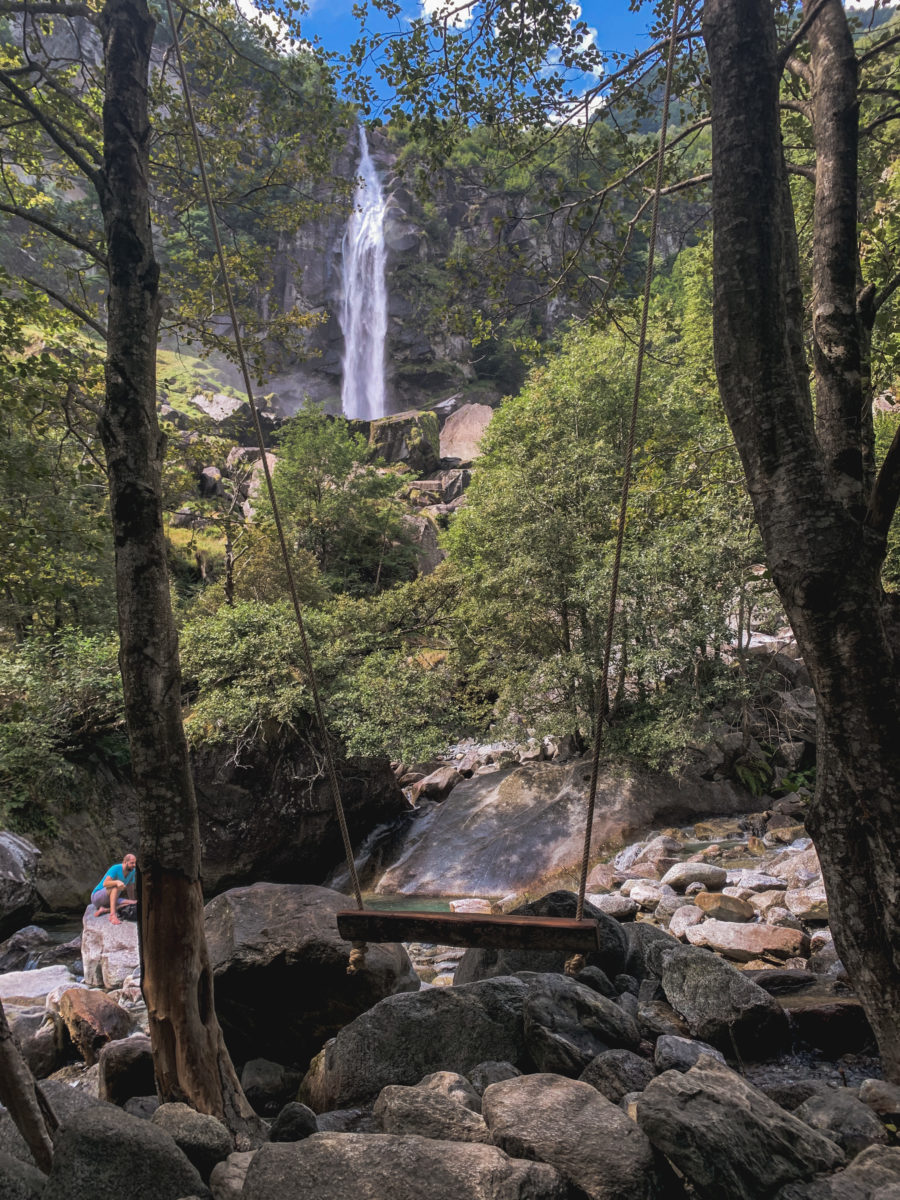
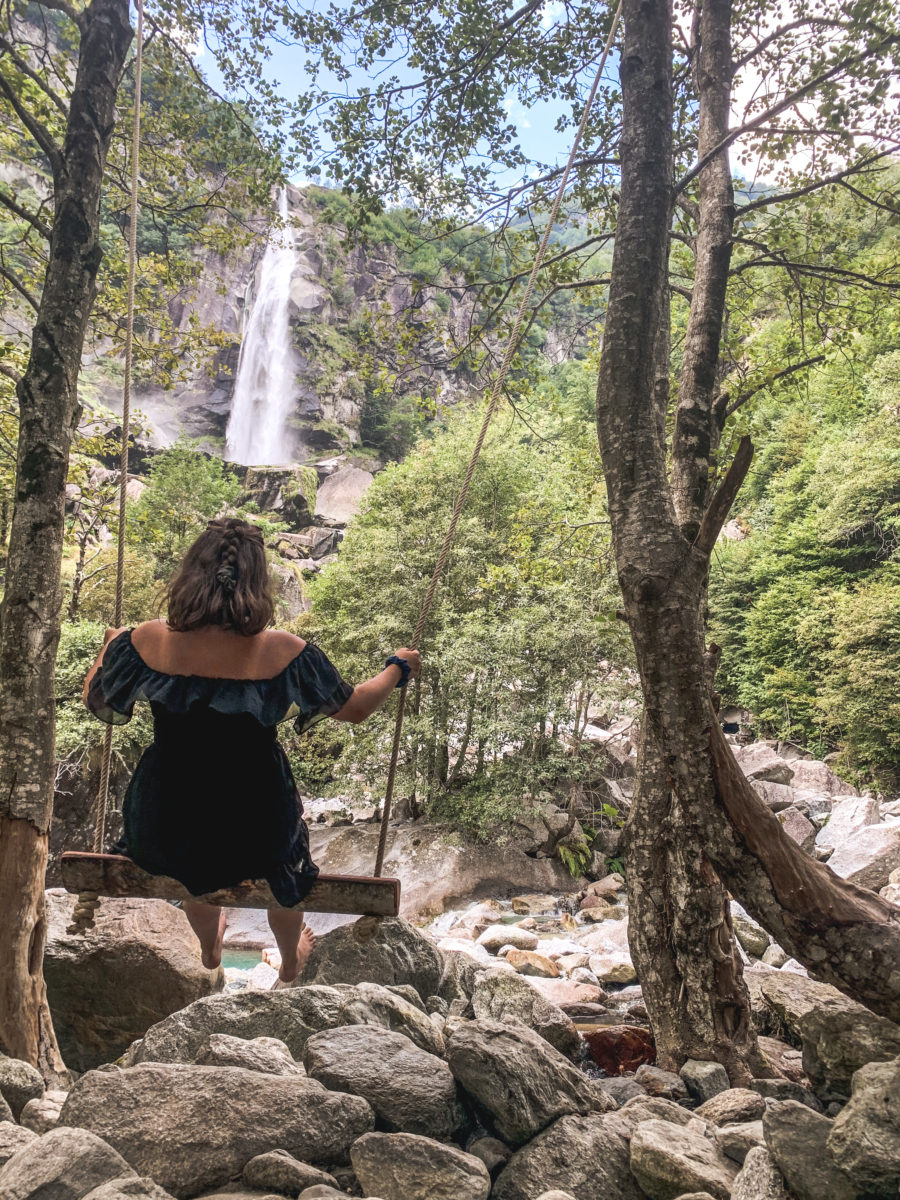

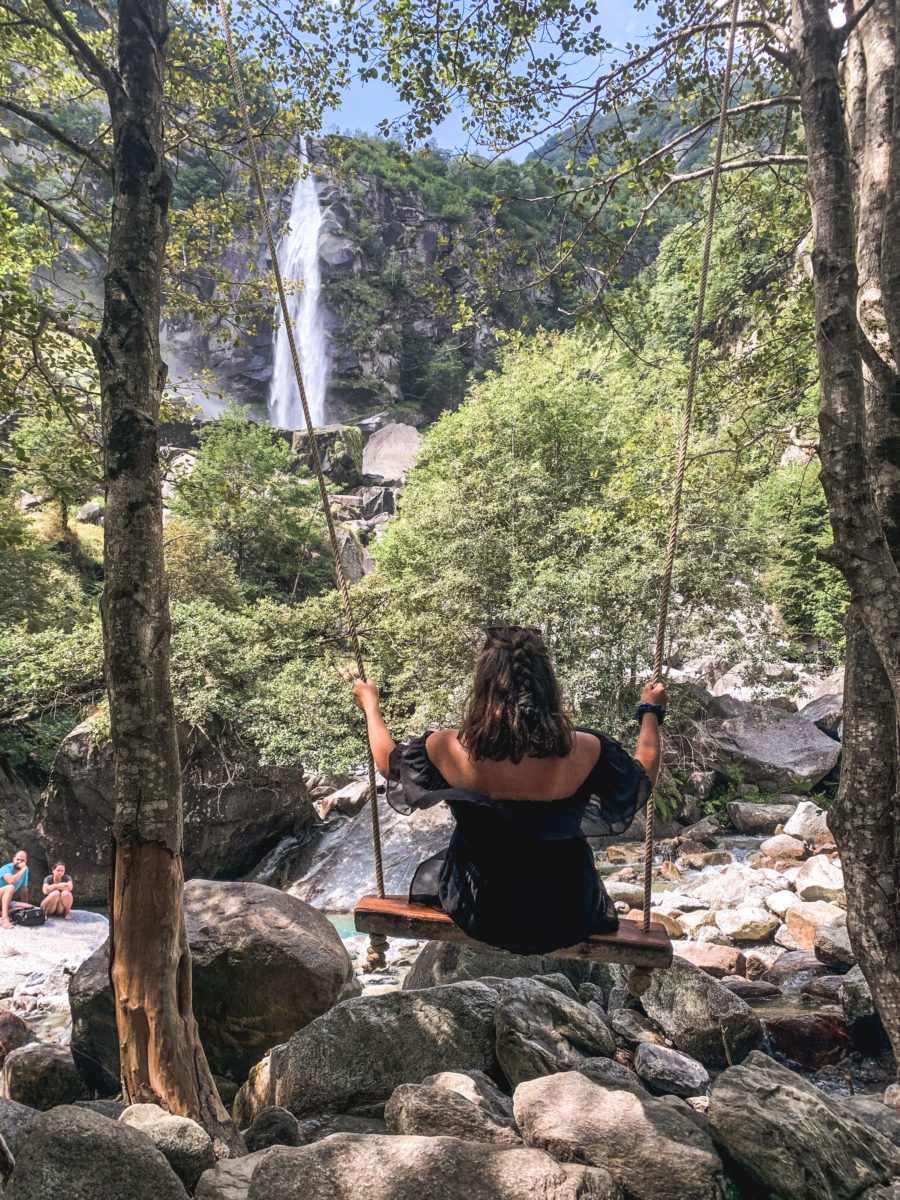
Although I am very impressed by the waterfall, I am rather disturbed by the feeling that I have landed in another time, since I am discovering for the first time, a hamlet of rustici. The beauty of this place comes from its peace and quiet, which allows you to slow down and enjoy everything.
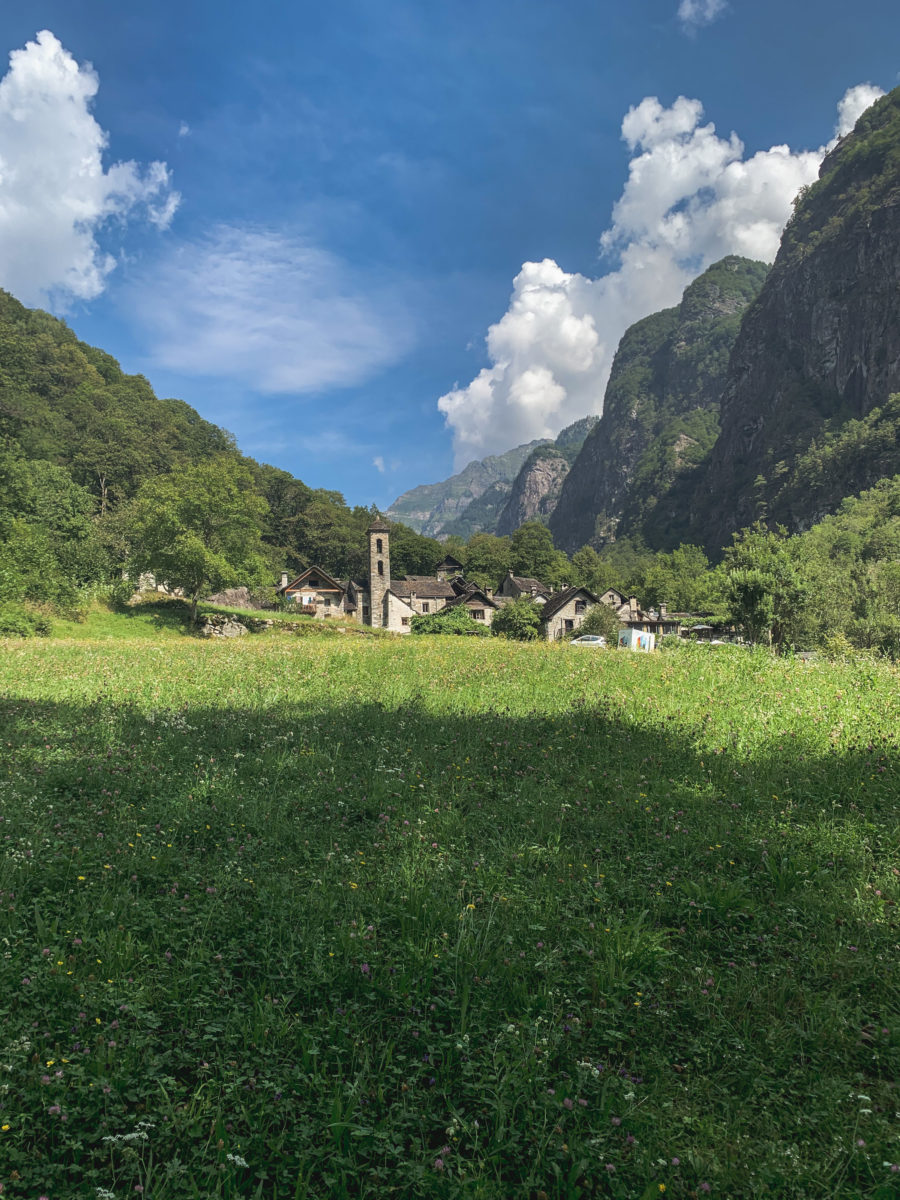
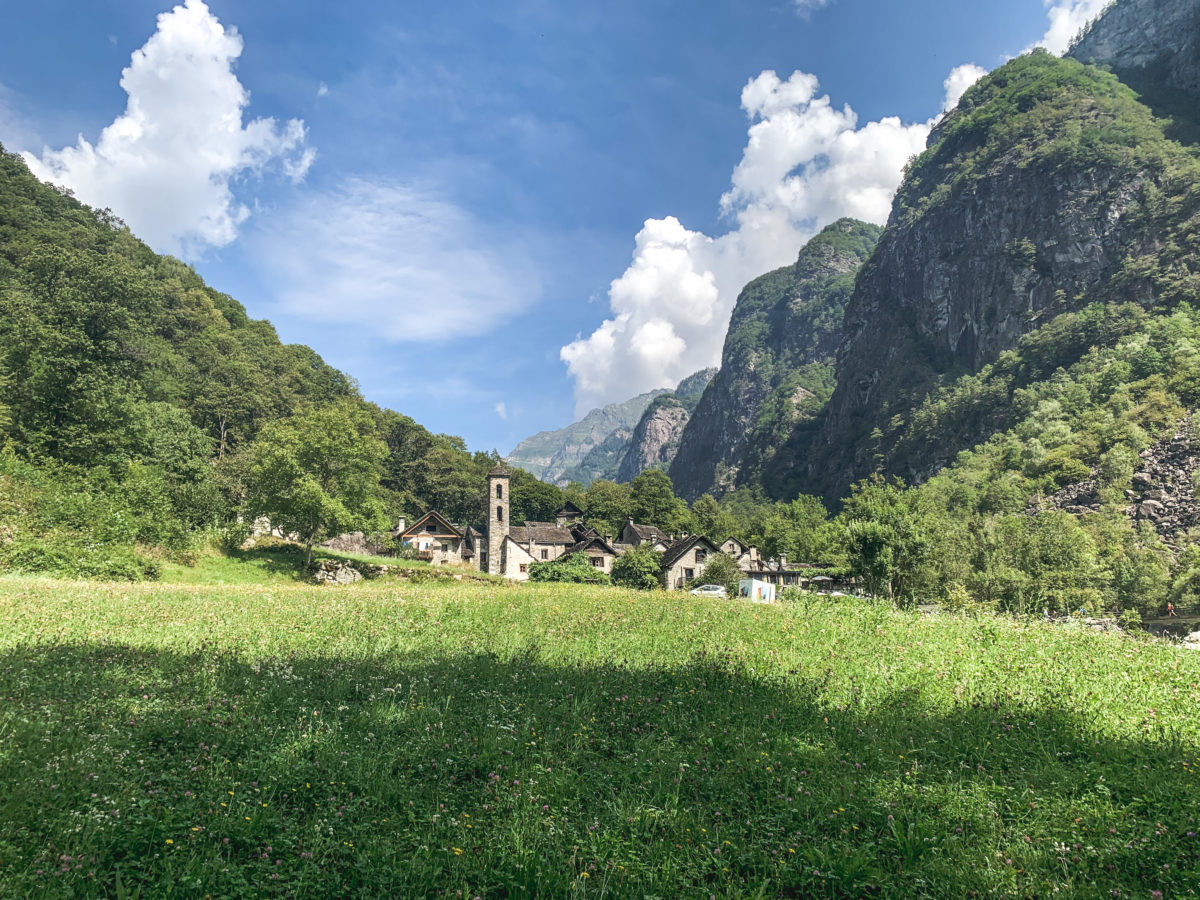
One might think that magicians have created a beautiful fairy-tale world populated by elves and goblins with these old, sometimes not so big, stone houses. A Rustico is a traditionally constructed building that is predominant in some areas of the Swiss canton of Ticino. The use of granite stones as a building material for the walls and roof is characteristic.

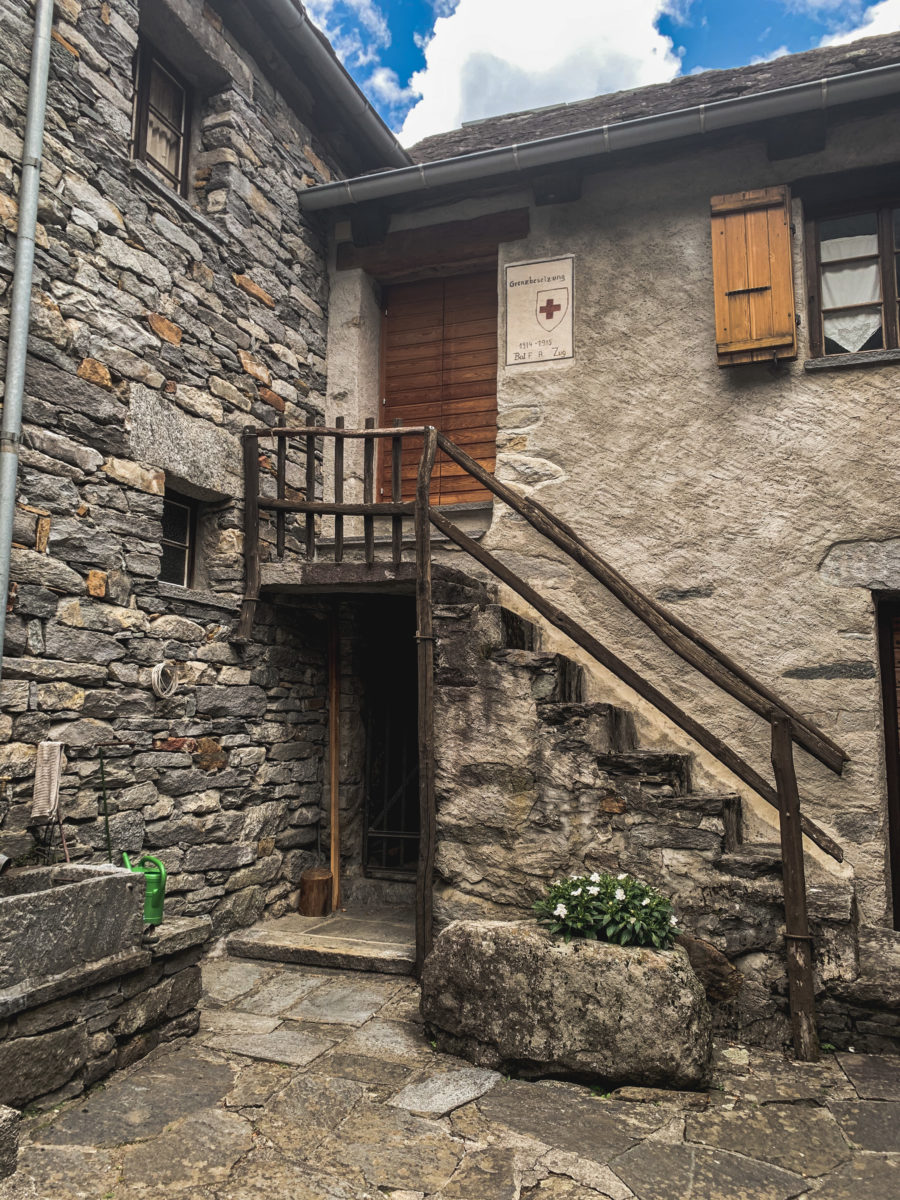
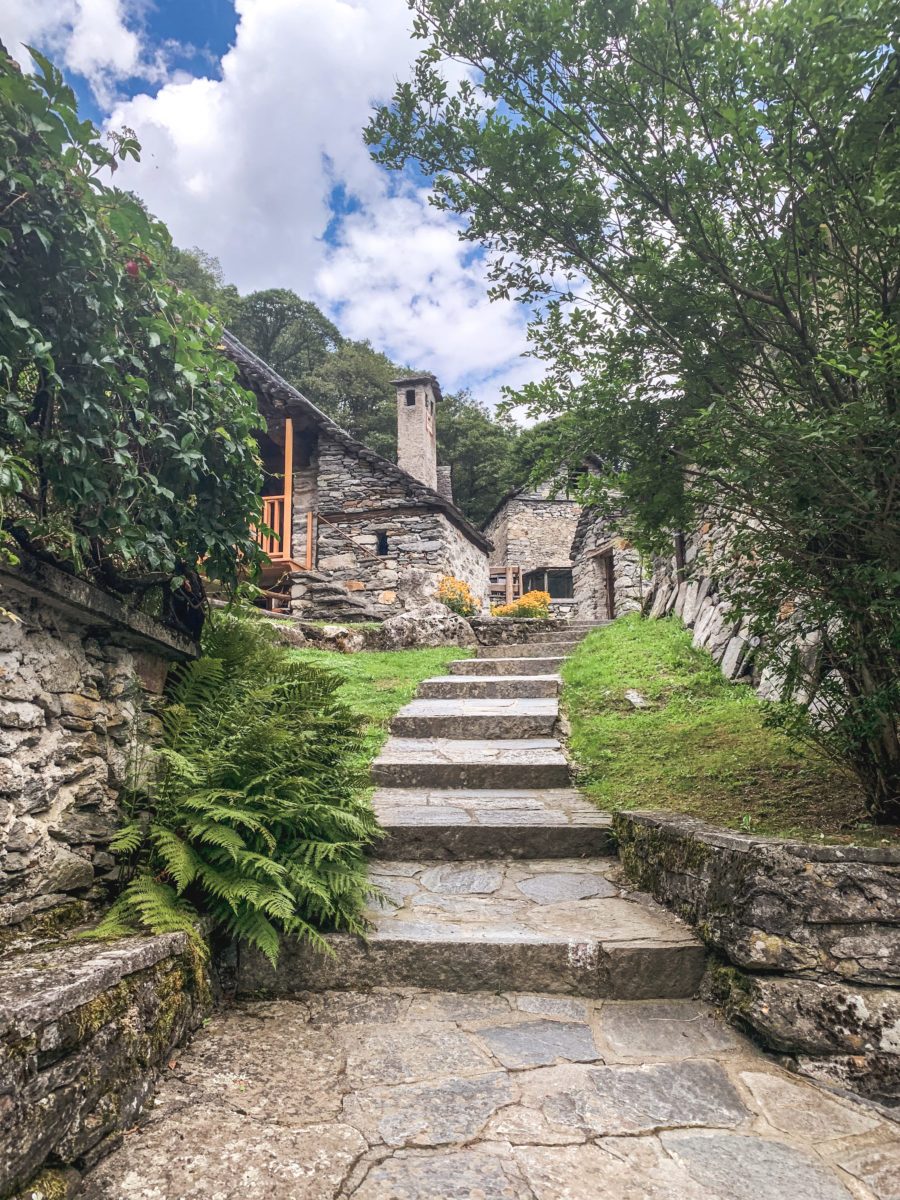
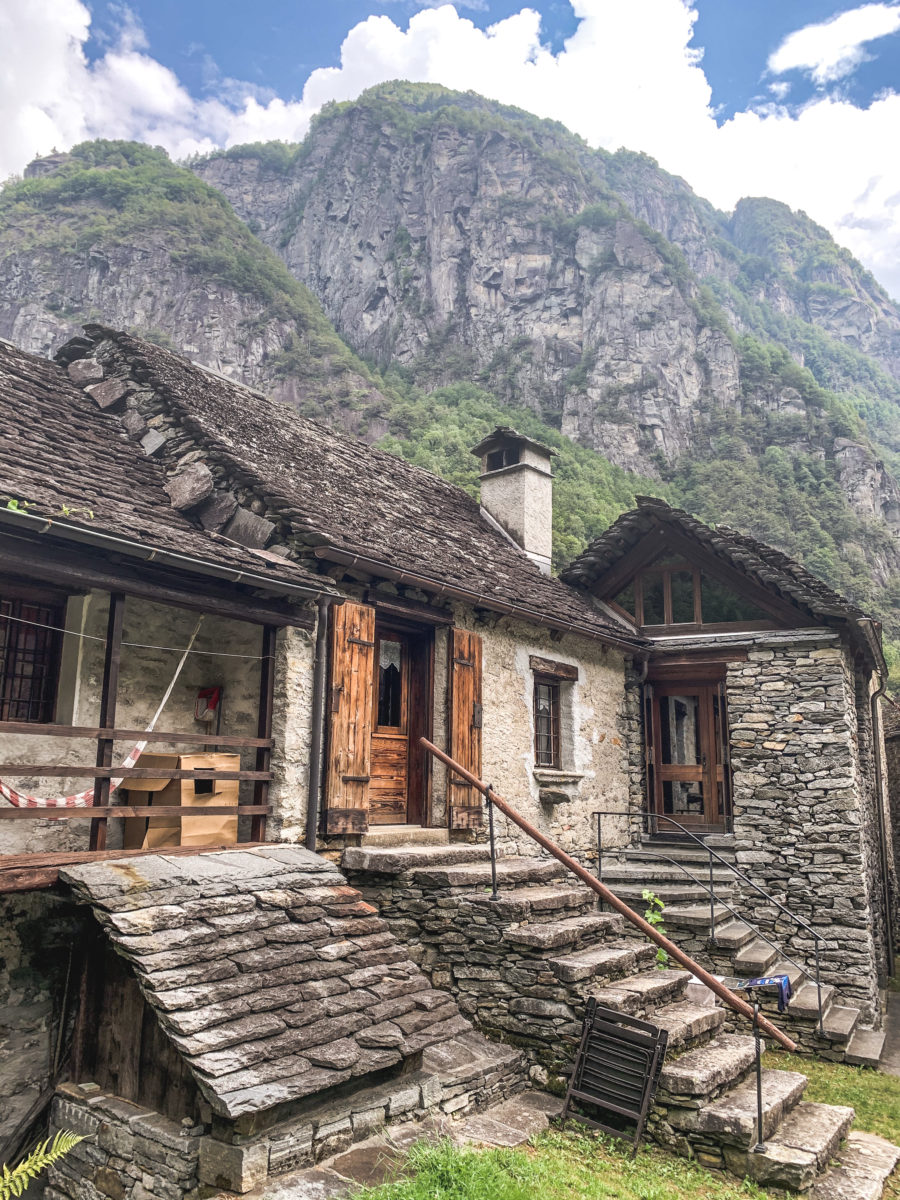
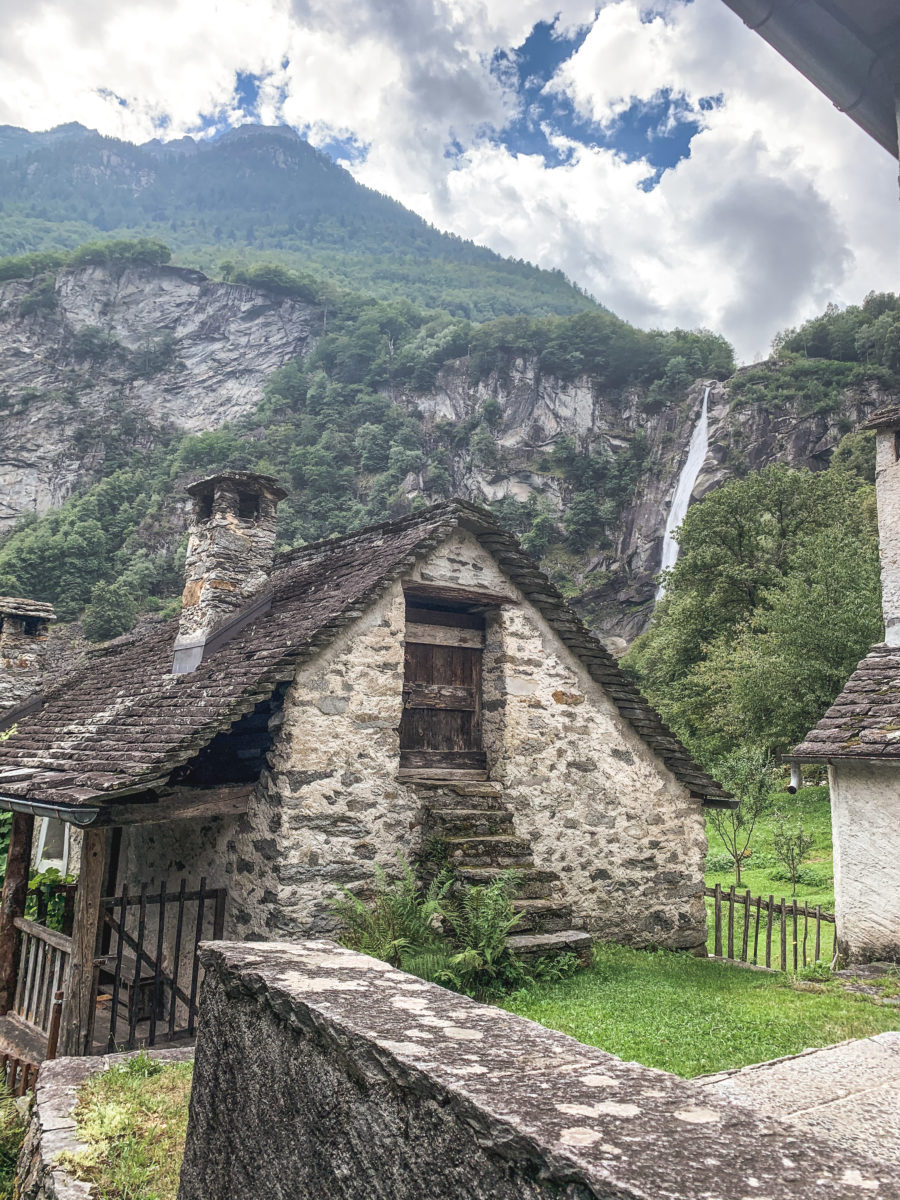

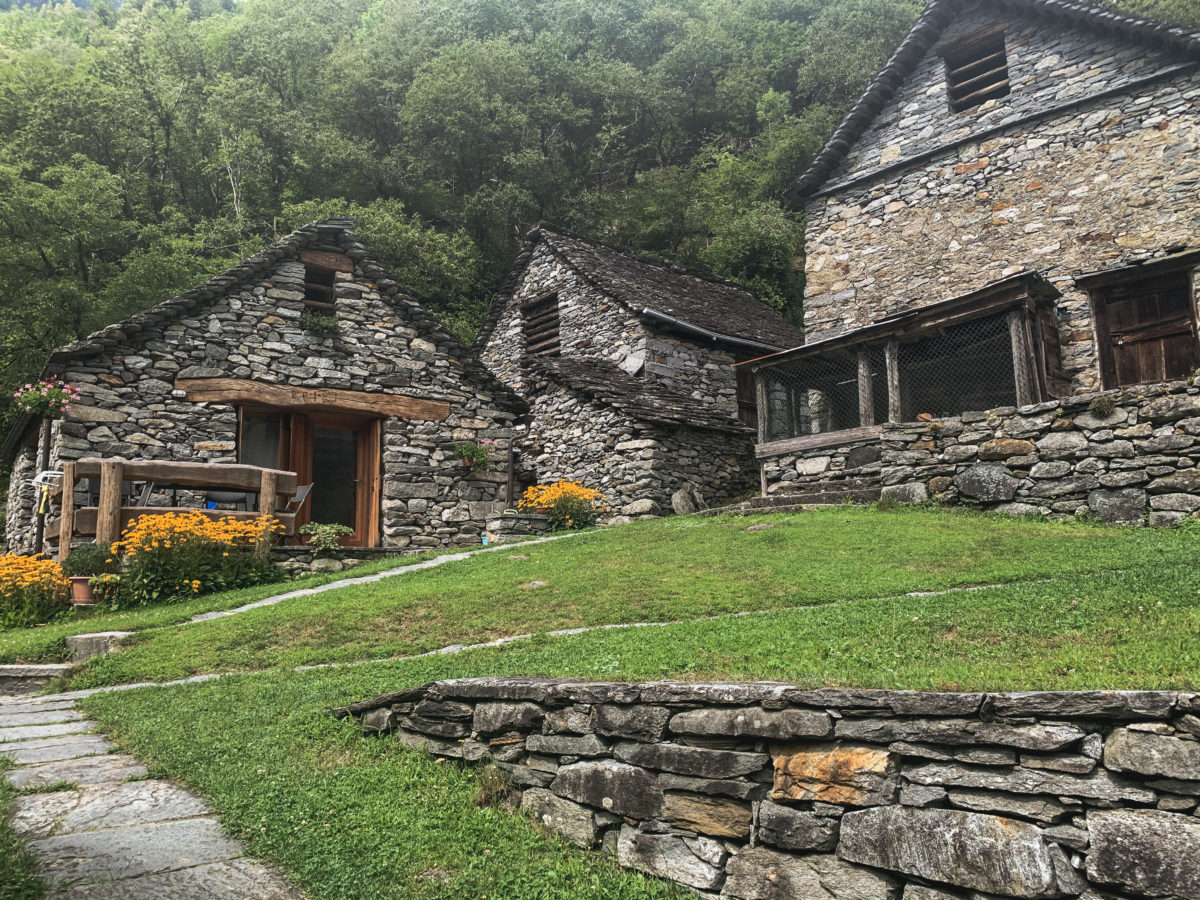

Rustici are traditionally used for agricultural purposes, but today they are also synonymous with holiday homes, sometimes luxuriously furnished on the inside and with walls that have not been touched on the outside, thus combining tradition and modernity. In Foroglio this is not the case, it is a real inhabited hamlet. So, I strongly advise you to walk among these old houses, but be considerate of the inhabitants.


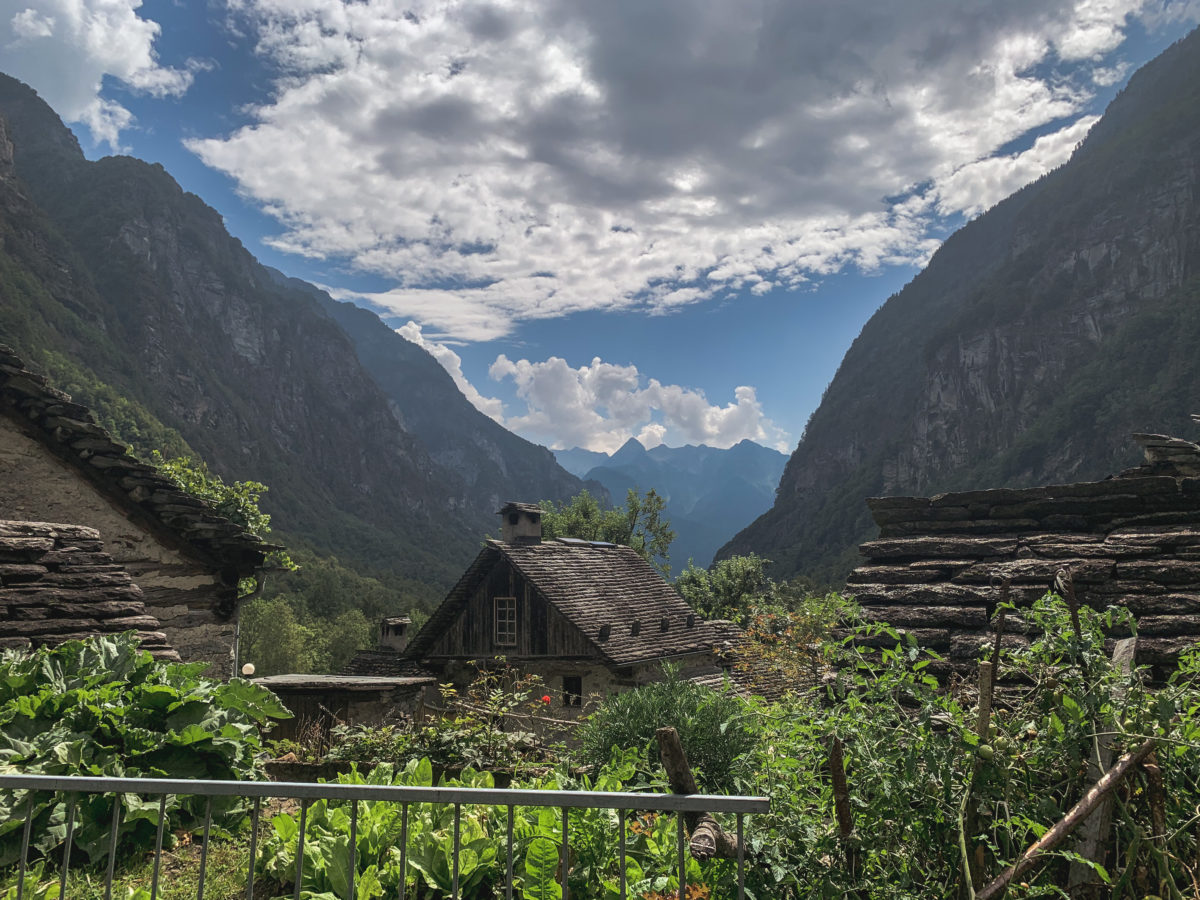
It’s hard to imagine, with the roar of the waterfall, that time seems to have come to a complete standstill in Foroglio. And this is precisely what makes this small village in the Bavona Valley so charming. Could you imagine living there?
In any case, the numerous stone houses and the giant waterfall in the background make Foroglio a perfect image of the authenticity and tradition of Ticino.
On your way back from Val Bavona, stop at the beautiful stone bridge of Cevio. It’s a perfect place to avoid the crowds and take a leisurely swim in the Bavona River.

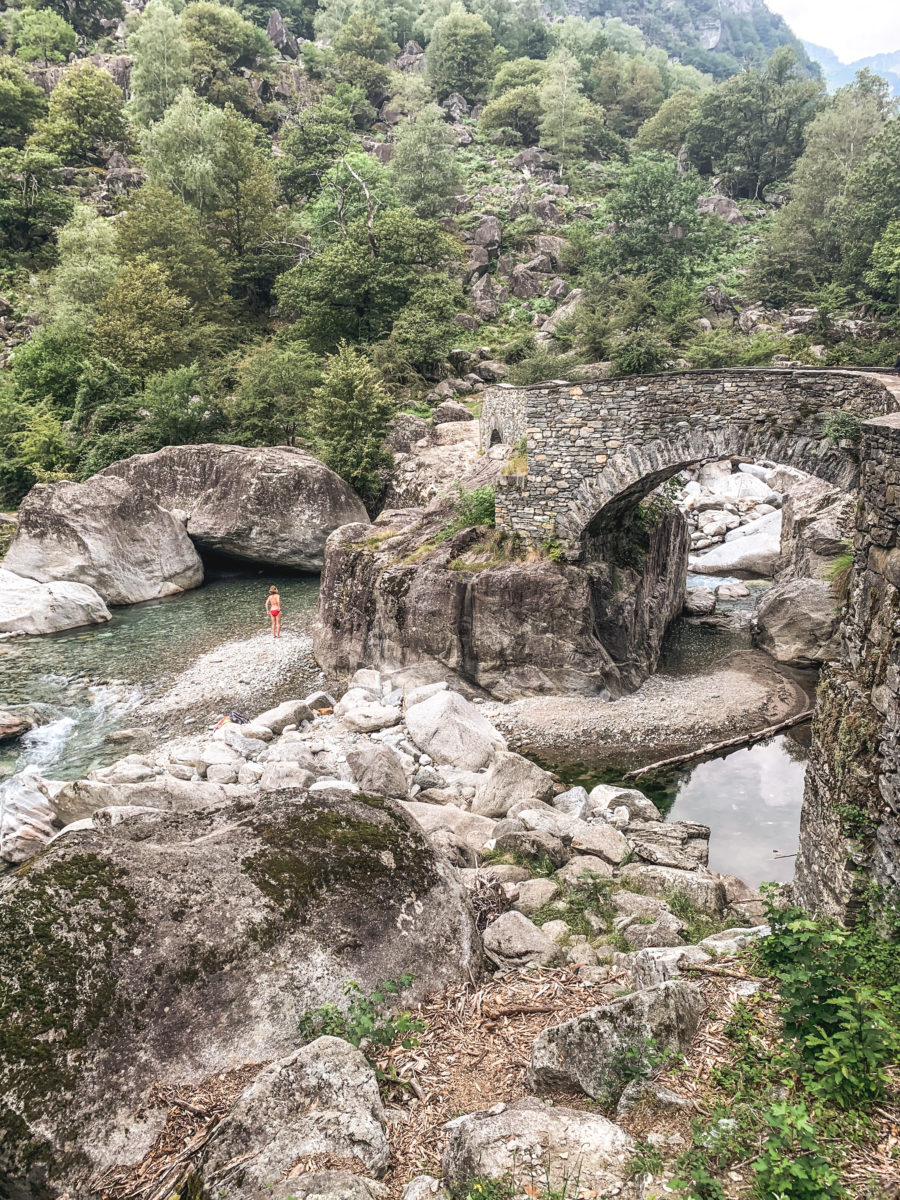
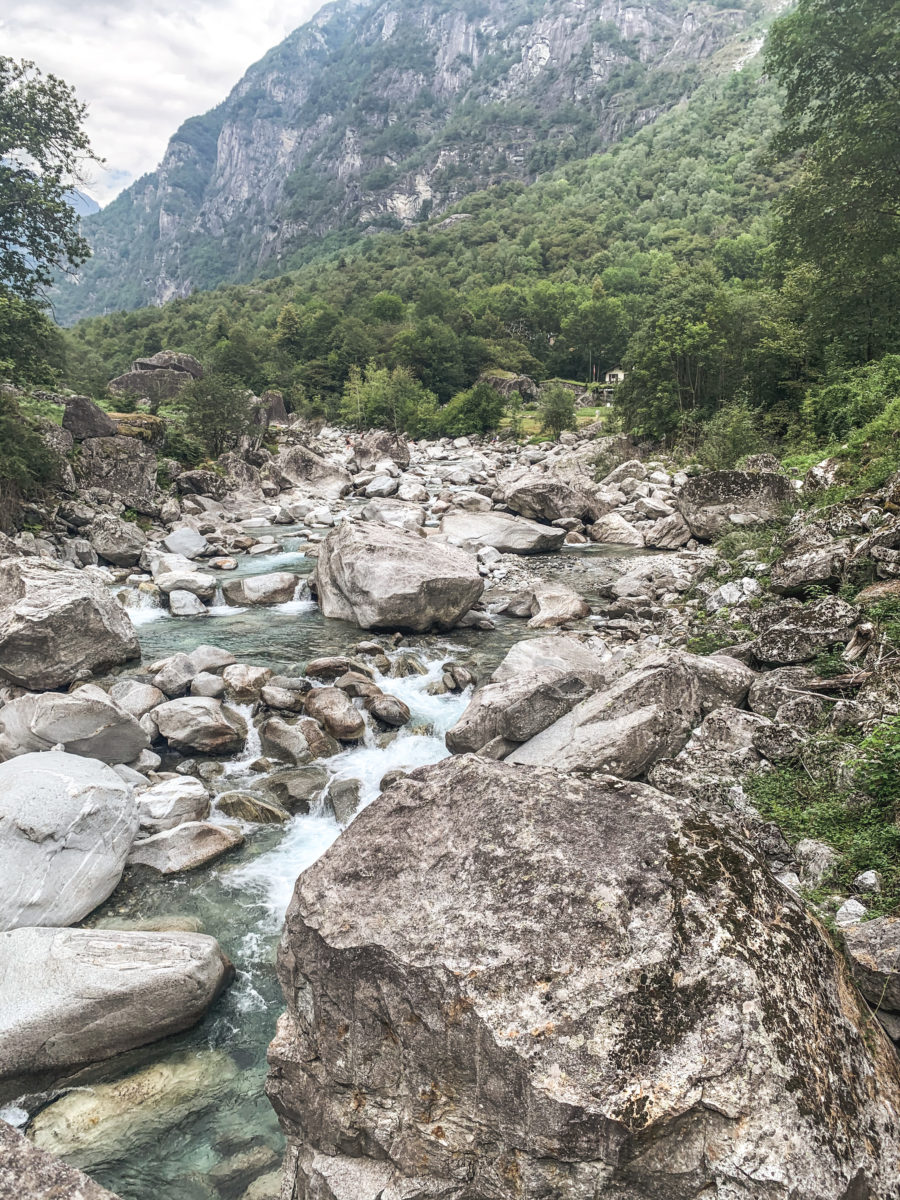
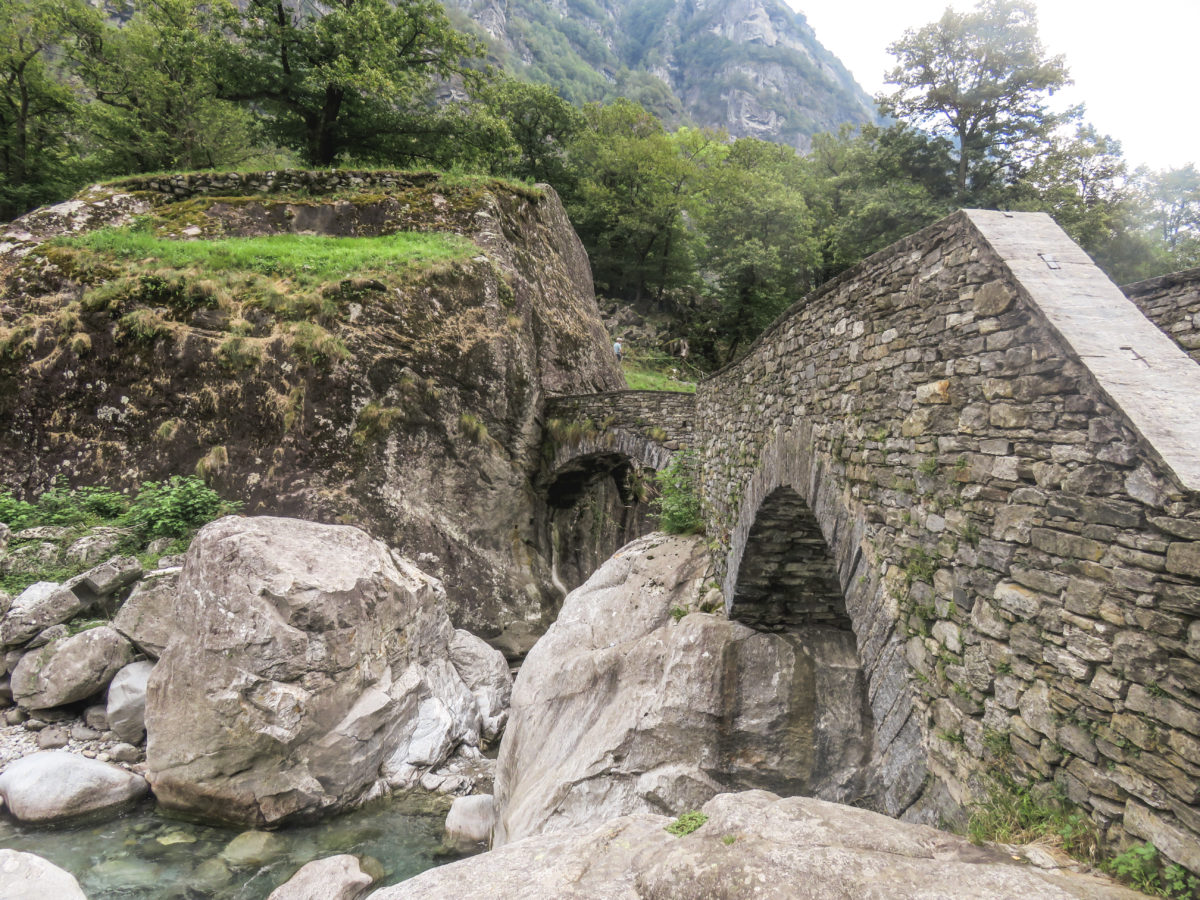
Cascata del Salto
Another unusual place to discover in Valle Maggia is the impressive Cascata del Salto, 60 metres high and forming a large pool of water where you can swim.
To discover it, you will have to stop in Maggia. To reach this natural pool, a short 15-minute walk takes you to the right of the church (Chiesa di San Maurizio), down the alleyway called La Valegia and then Alla Cascata (which literally means “to the waterfall”).


You will take a small asphalt road, then cross a vineyard until you find a path on the right that leads to the waterfall. It is an ideal and unusual place, but it also boasts a high level of popularity. For example, it was impossible for us to leave our things and go for a swim. It was a simple round trip, but well worth it outside the summer rush.

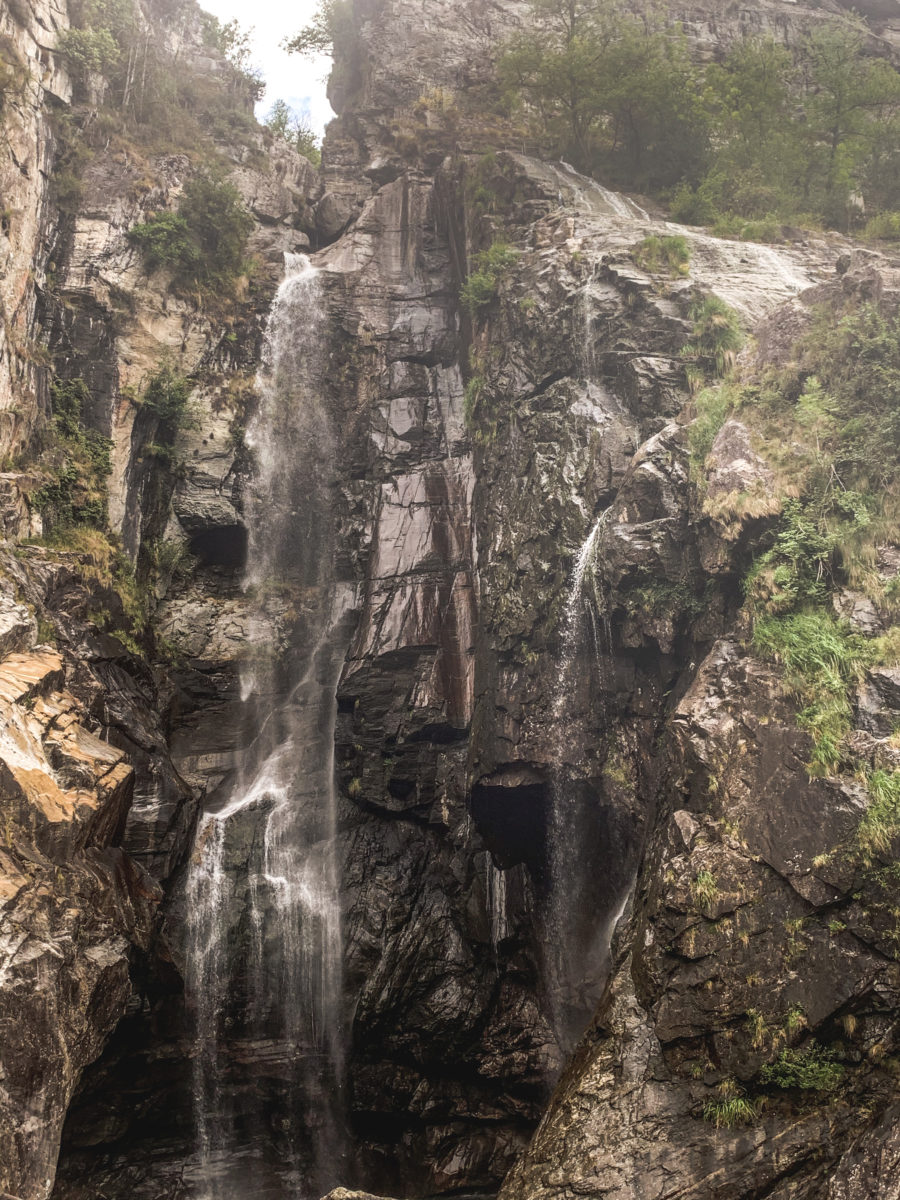
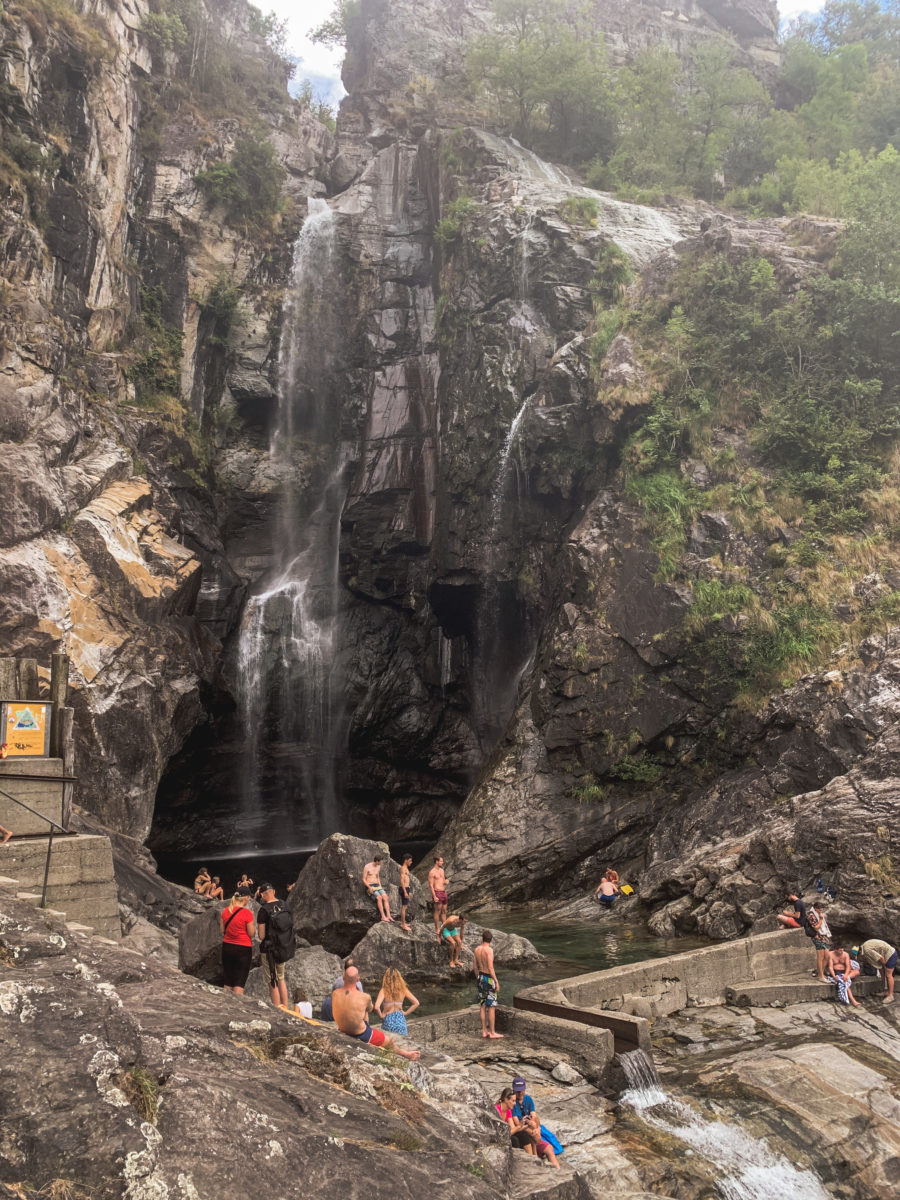

We parked in the village, at an official parking place, however, many cars simply stand along the road before or after the bridge over the Riale Salto.
Osogna
It was by chance that we discovered the Pozzón d’Osogna during a walk, wanting to cool off from the summer heat of August 2020. This place is a natural well, formed by the last waterfall of the Nála river.
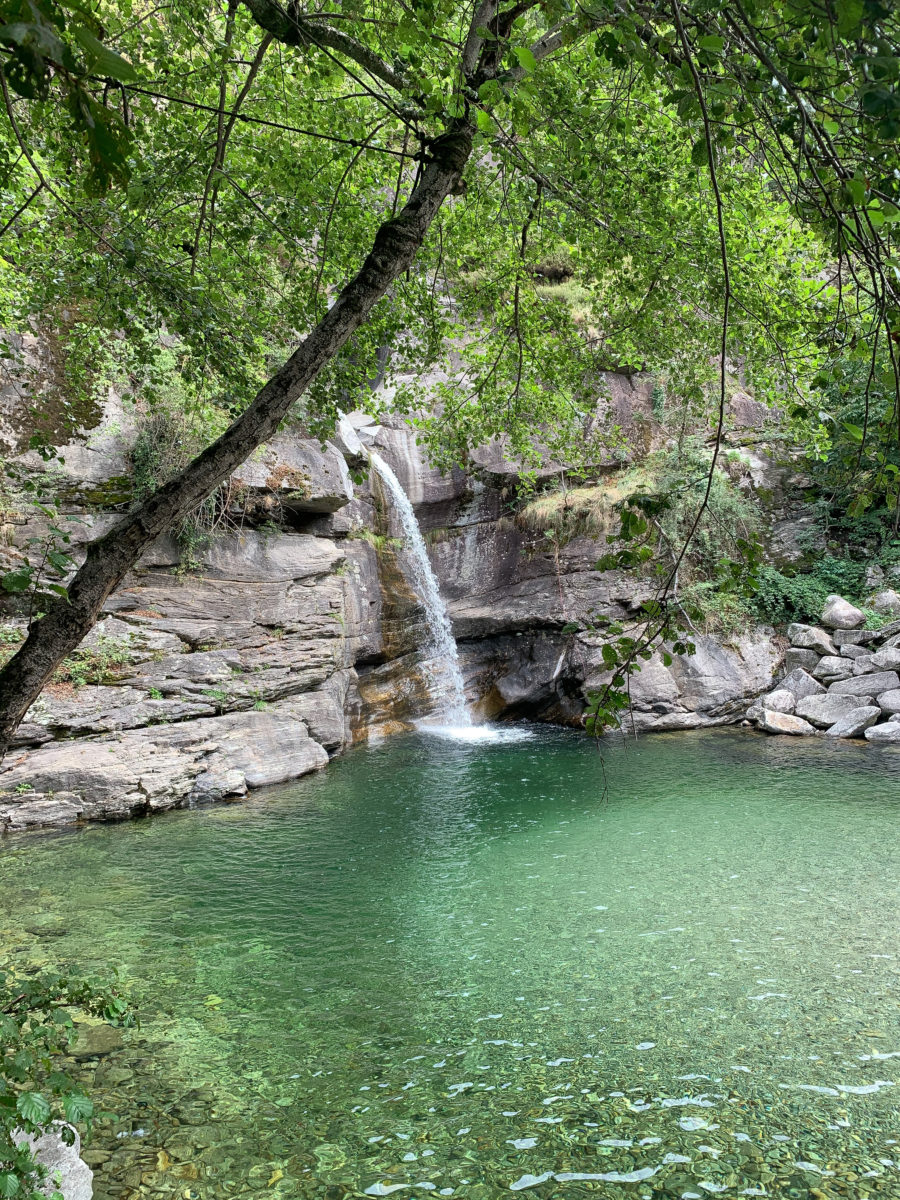

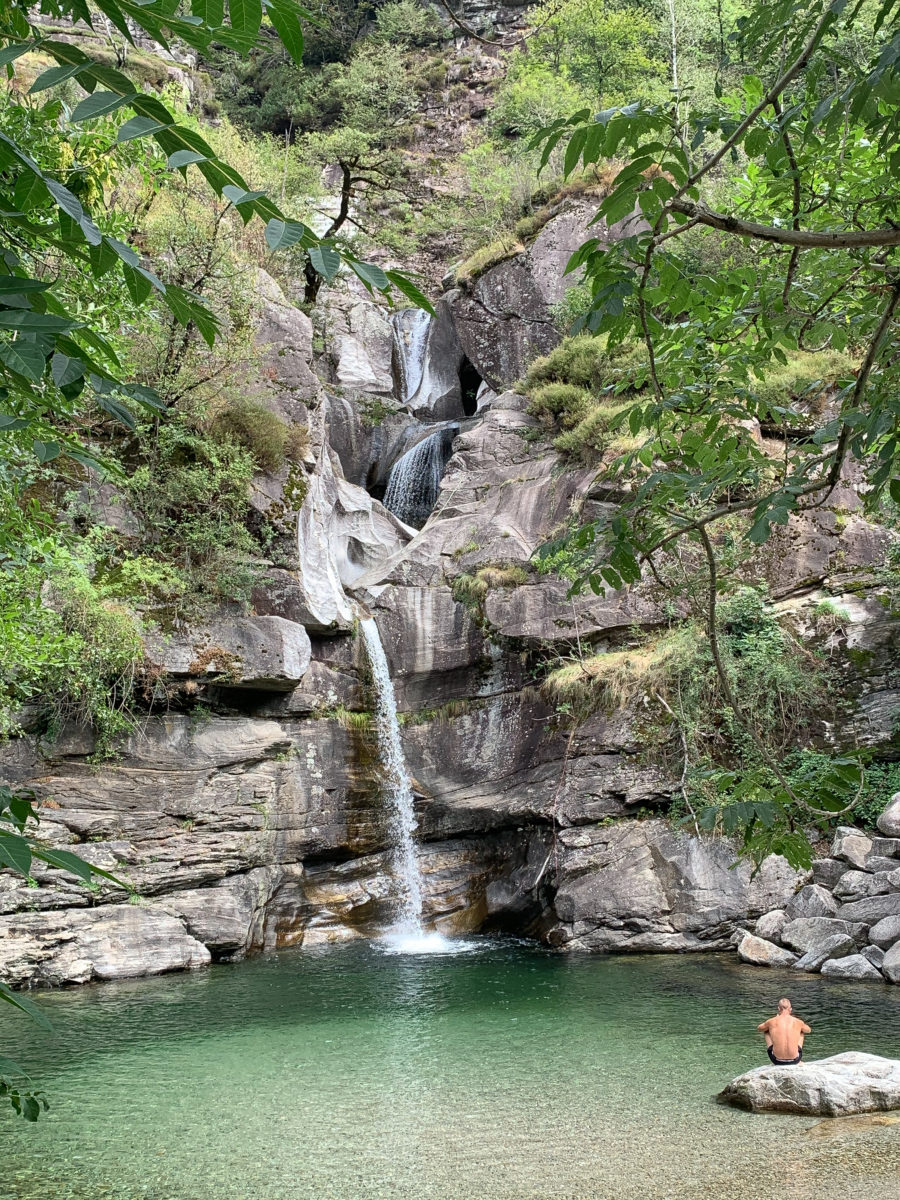

It has become a good place to relax and enjoy nature. I later found out that it is the drop-off point for canyoning enthusiasts, a trendy extreme sport that Ticino has made one of its main leisure activities due to the numerous water spots. The adrenaline of this Ticino adventure will come with the Tibetan Bridge presented later, but I would gladly undertake a trip into the deep Ticino gorges one day.
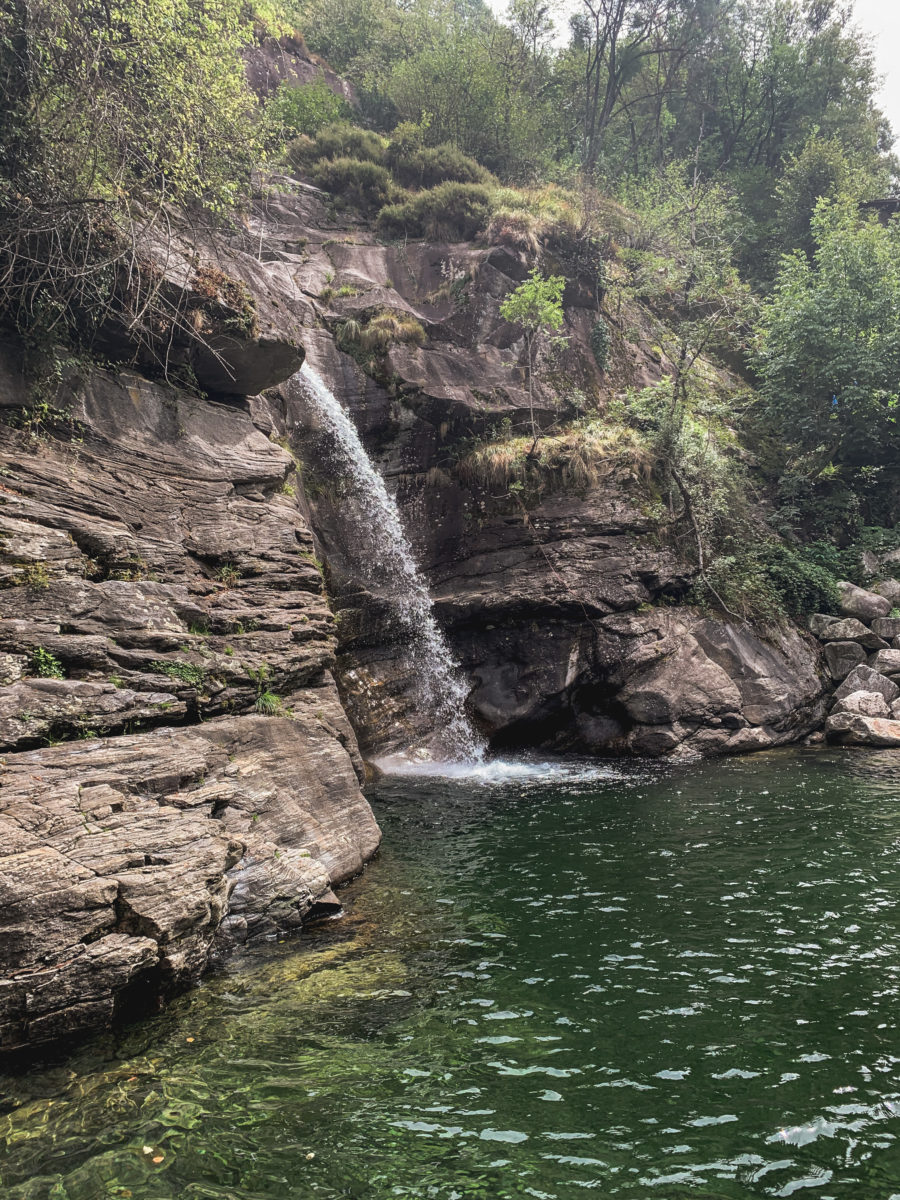
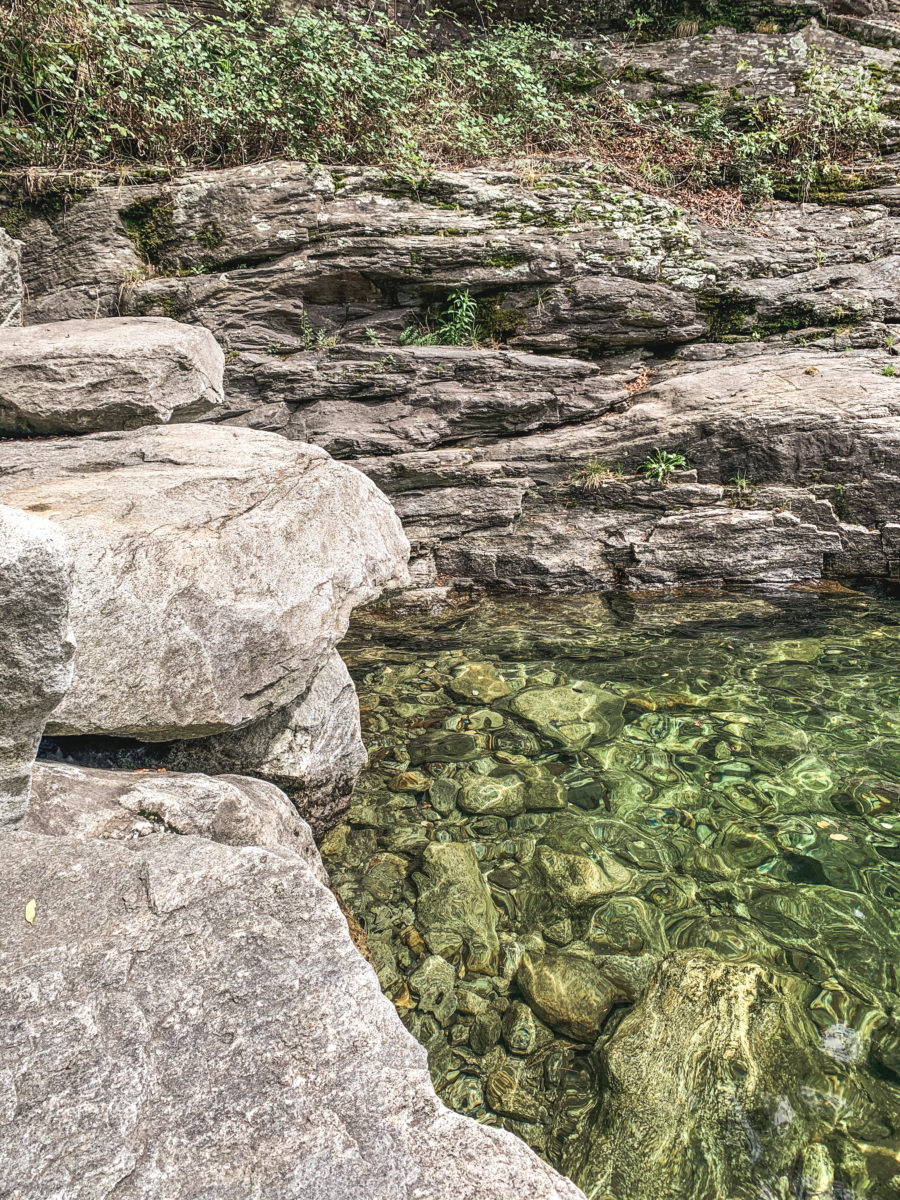
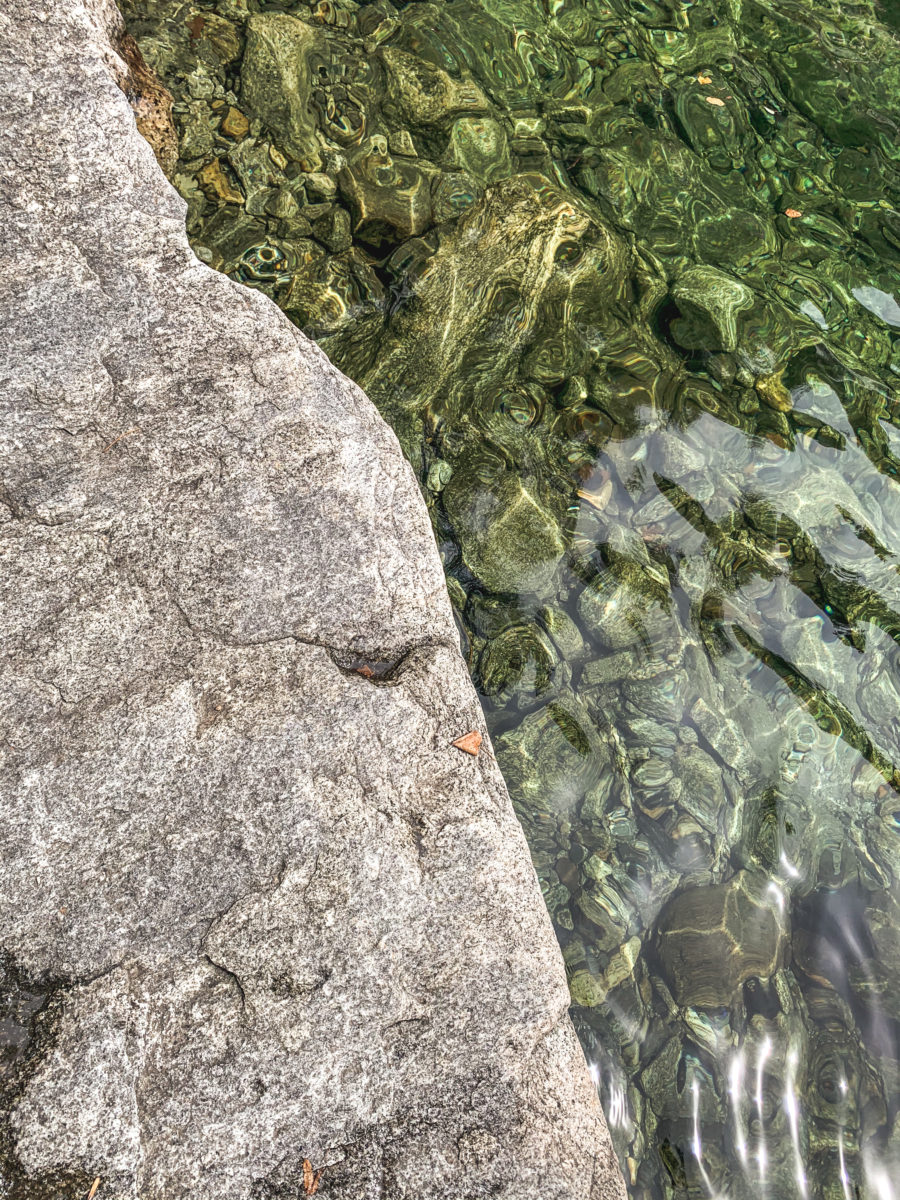
The crystal-clear water of the well is not the only nugget of Osogna, since just a stone’s throw away, the grotto al Pozzón is a perfect place to nibble on typical cantonal dishes and drink some pleasures of the Ticinese vineyards.
Whatever the place, during a stay in Ticino, I strongly advise you to taste the local gastronomy in a grotto, which is a typical outdoor restaurant of the Italian-speaking canton.
To discover this place, we parked in the village of Osogna on ol Mött street. We didn’t know that an alleyway leads to the grotto and to some places for cars.
Sonogno and the Froda waterfall
I take you to the most famous valley in Ticino, the Val Verzasca. However, when we got there, seeing the large crowds lounging around the Verzasca (in Lavertezzo with its famous double-arched bridge of medieval origin and its “pebble beach” in a fairy-tale setting), and despite the fact that the weather was very gloomy that day, we continued our journey to discover the last village of the Verzasca, Sonogno.
We left the car at the official car park at the entrance to the village and began our little adventure, having found a destination for this escapade: the Cascata della Froda.


In fact, Sonogno is home to the spectacular Cascata della Froda, which can be reached by taking a walk from the historic centre of the village. Just follow the “Froda” sign on the hiking signs and the walk takes about 25 minutes (which is long when it rains). But this place is known for its positive energies, which I find fascinating during my nature outings (remember this beautiful place in the Vaud region here).

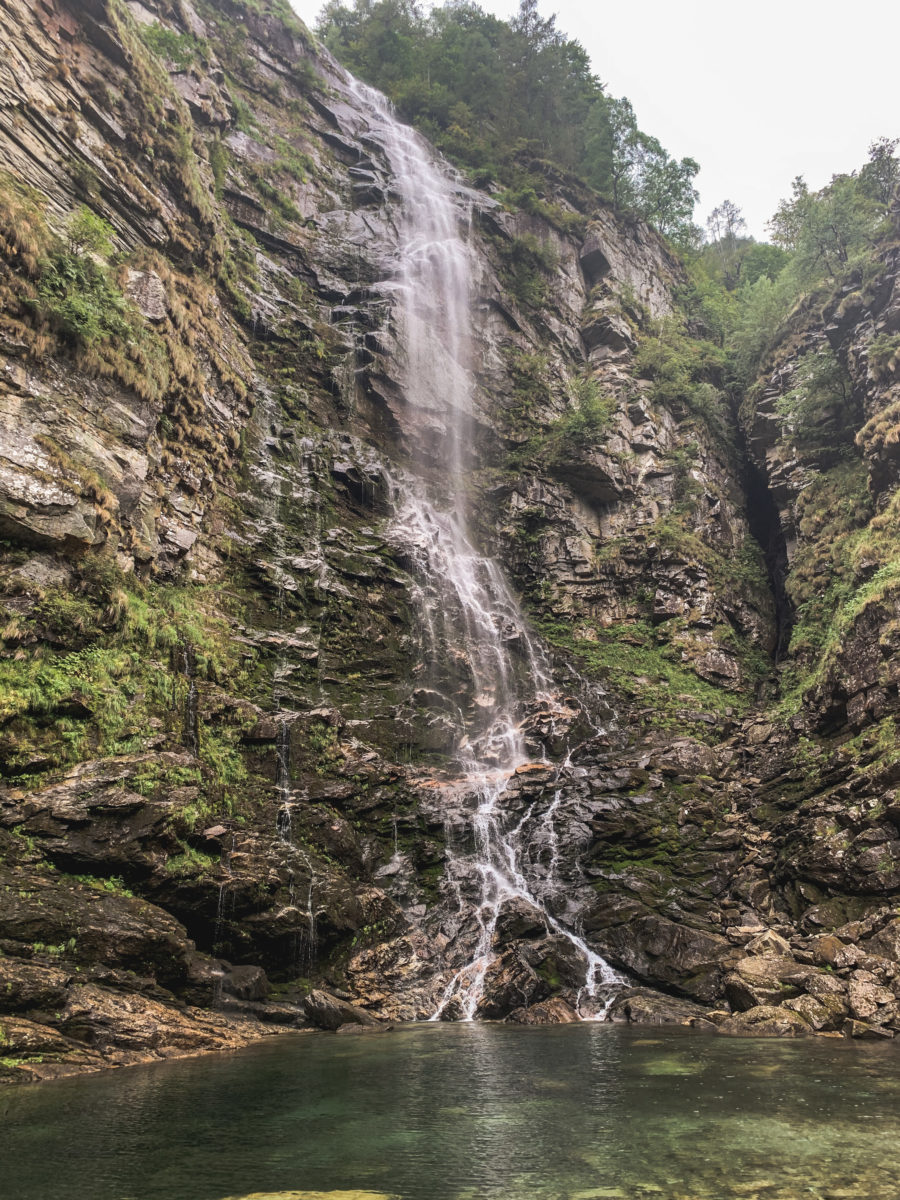

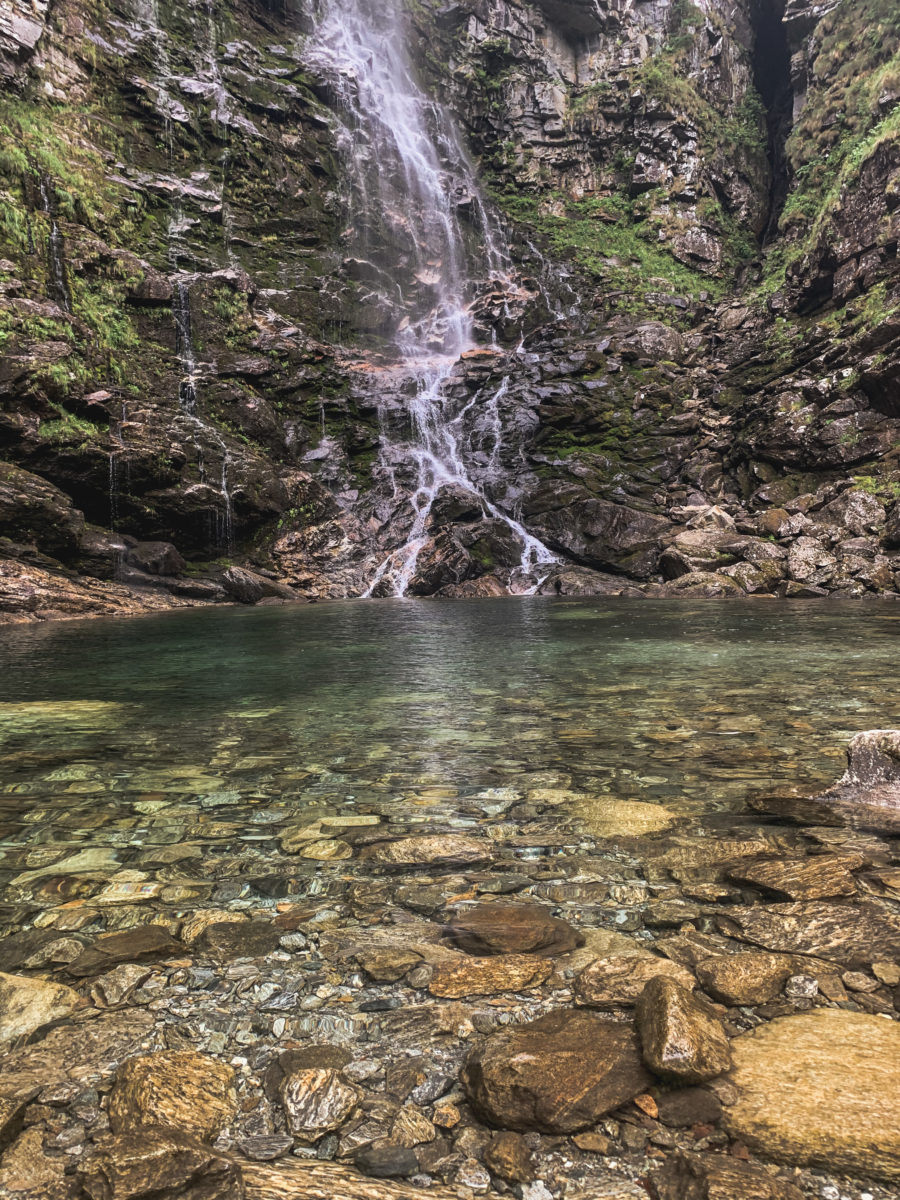
The Froda waterfall is an energetic place, not so easy to reach, located in a rocky cirque at a higher level. The place is bucolic and the colour of the water is typical of the crystal-clear waters of Ticino, even on a cloudy day. One feels the energetic benefits of the ionized air of the small waterfalls.

On the way back, we discovered the well-preserved centre of Sonogno with its characteristic houses of the Ticino and the Verzasca Valley in particular. The Verzasca Museum is located in one of the typical houses of the area. And then we could admire the beauty of the landscape, surrounded by magnificent mountains. Sonogno is situated at the confluence of two wild valleys: Redorta and Vegornesso, which connect the roads to the Leventina and Maggia valleys.

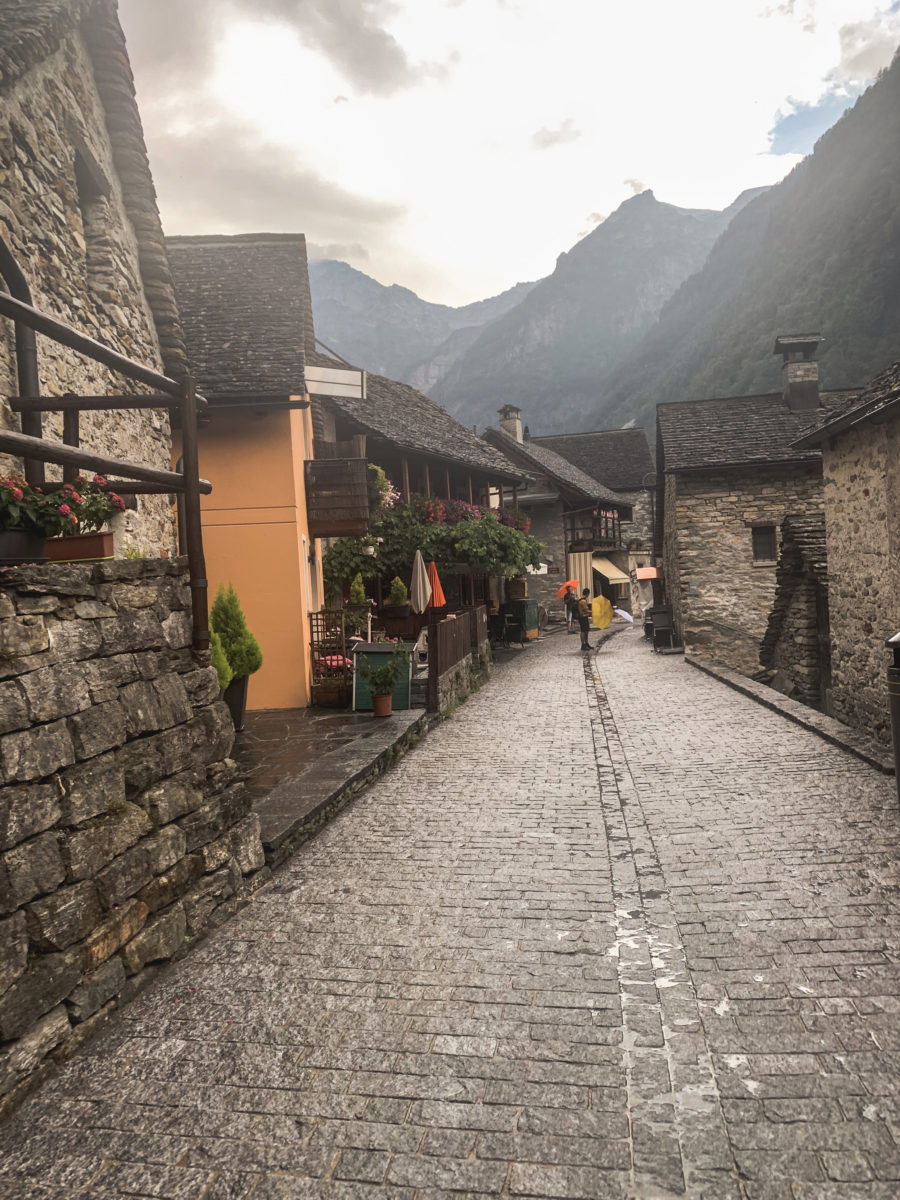
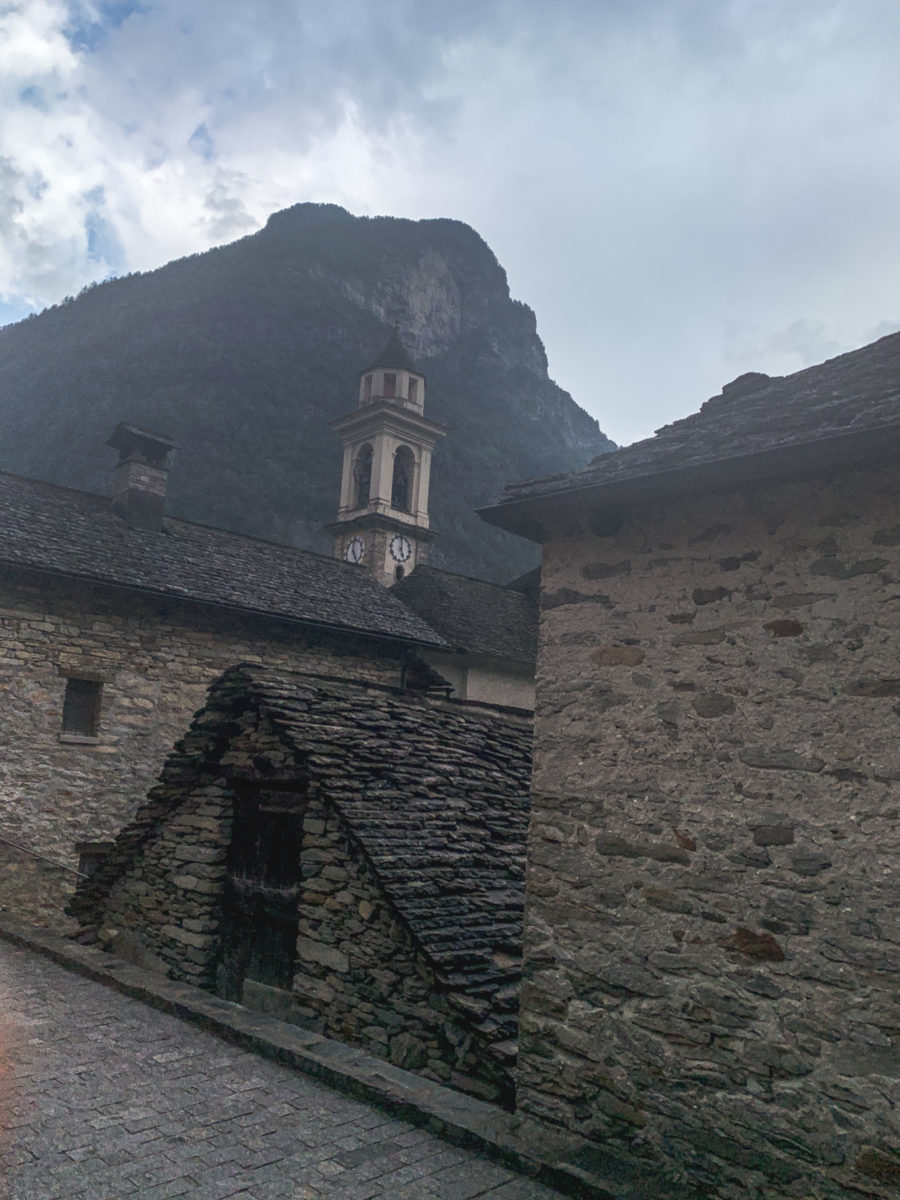
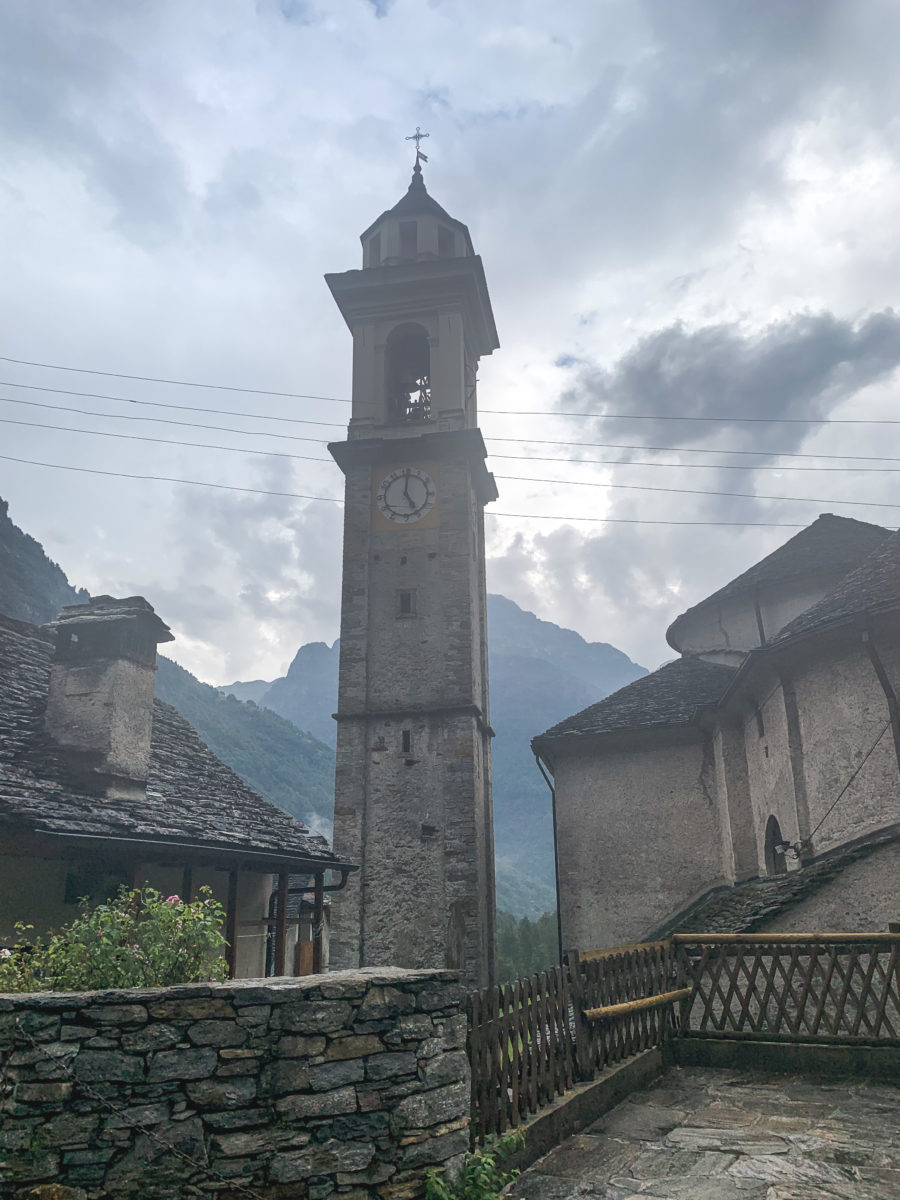

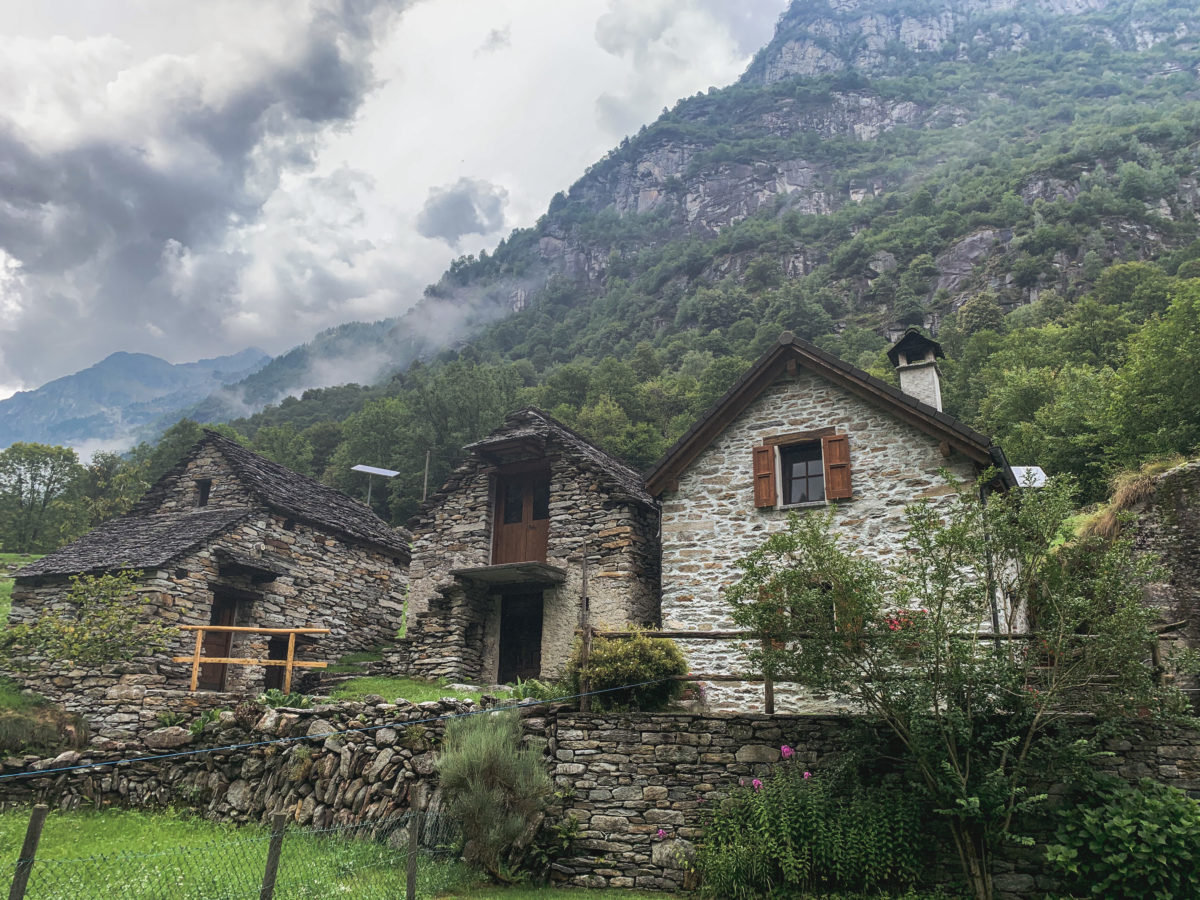
Ponte Tibetano
Inaugurated in 2015, the Carasc Tibetan Bridge has become a major tourist attraction for the Bellinzona region in just a few years. After all, it is not every day that you can cross a 270-metre-long bridge suspended 130 metres above the ground.

The easiest way to reach the Ponte Tibetano Carasc is to take the cable car from Monte Carasso to Curzùtt: from there it takes a long, leisurely half-hour ride up and down to reach the bridge. But of course, we missed the cable car that leaves every hour.
Not wanting to wait an hour in Monte Carasso, which is a small town close to Bellinzona, nor to leave from there to climb to the bridge (we are talking about a walk of several hours, and I remind you that I am not surrounded by walking enthusiasts), the cable car employee told me that there was another way to get there for a fee of 5 CHF.

To do this, we just had to go to the town hall, which offers a shuttle bus service to the other side of the bridge, to San Defendente and Sementina, a few times a day. Since it was leaving 5 minutes later, we decided to take it, and we were lucky because it allowed us to take a walk that would not take us through the same place twice.
It took us about twenty minutes of walking in the forest on the Sementina side to reach the famous suspension bridge.

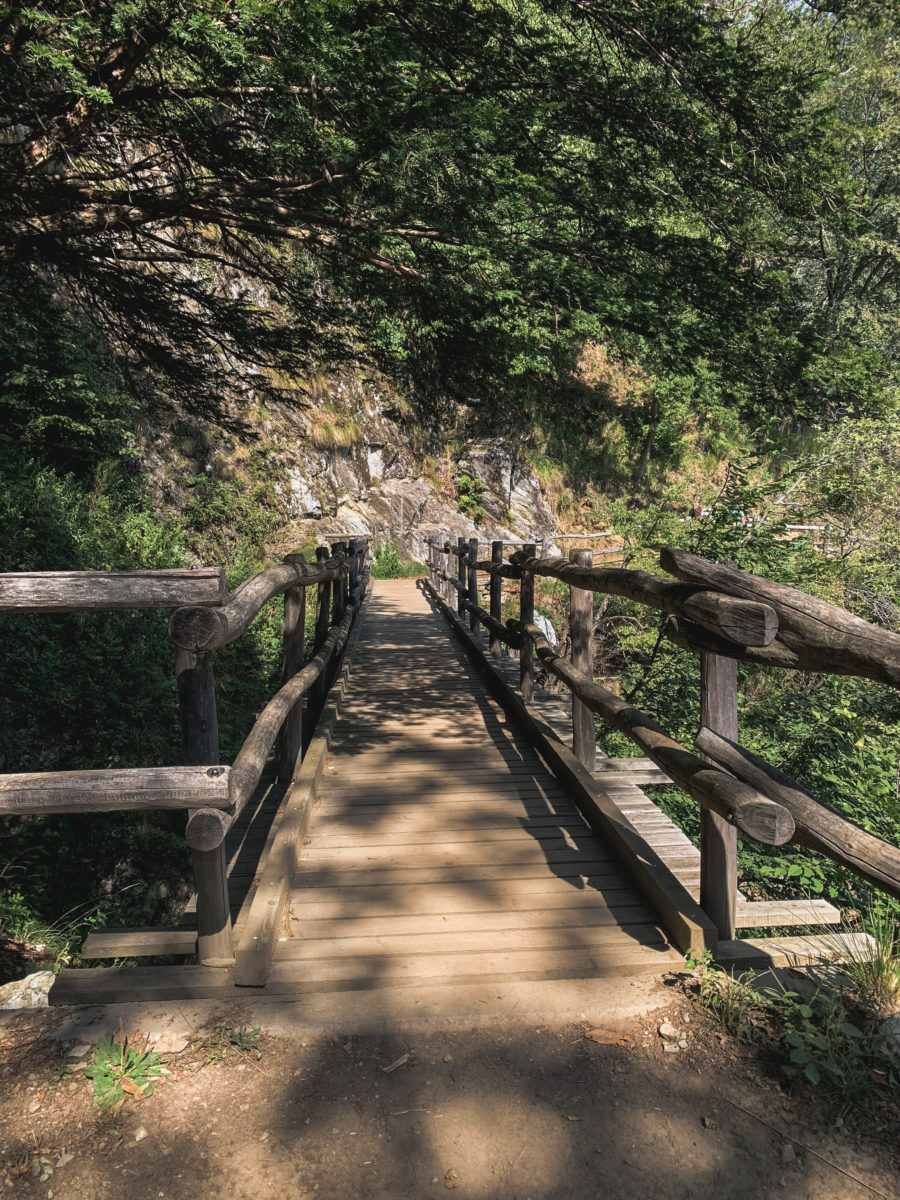
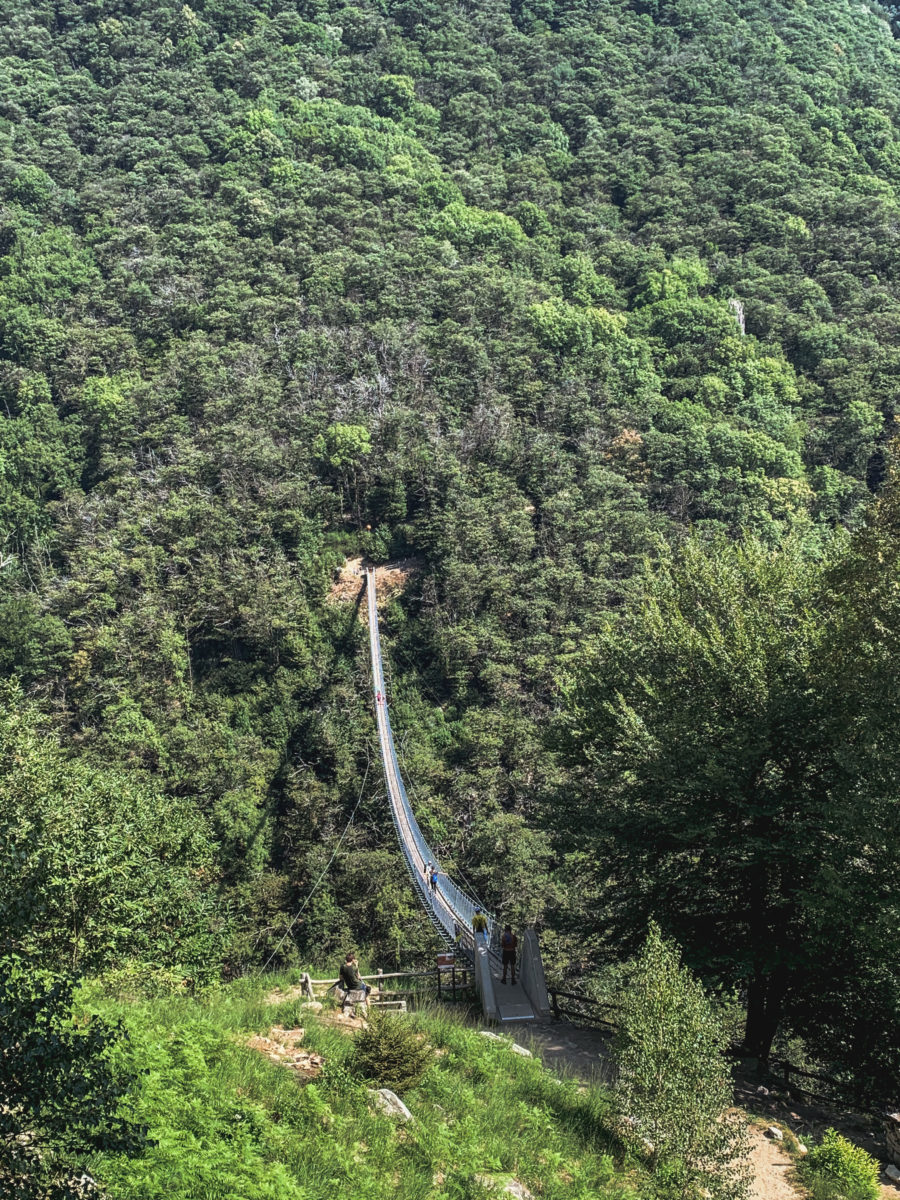
Anchored at an altitude of 696 m, the bridge rises 130 m above the ground at its central point. The bridge is only one metre wide and is made of larch wood. Not being afraid of heights, it is always my intrepid side that makes me cross this kind of bridge, knowing that the safety measures, here in Switzerland, are always assured! It is therefore an experience to be undertaken during a stay in Ticino.

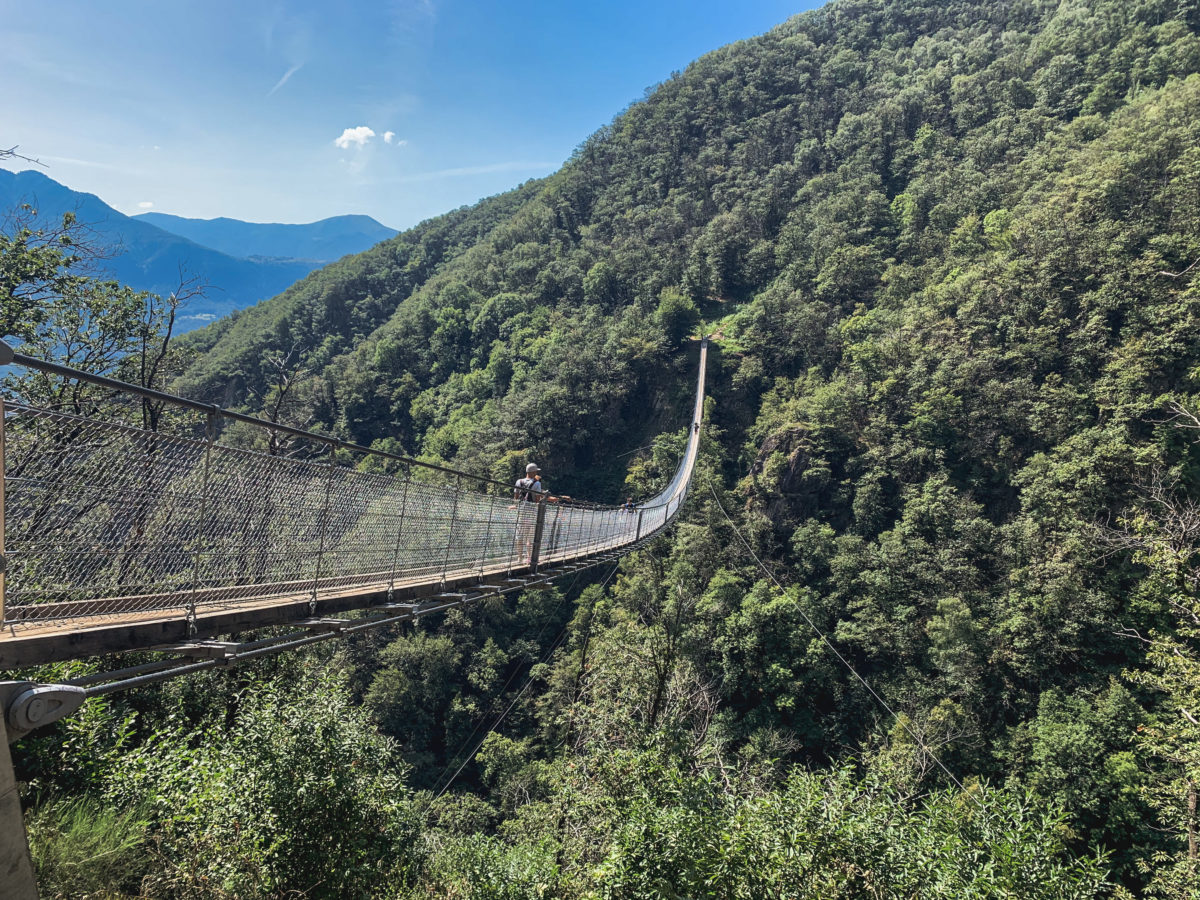

In the middle of the bridge, you should stop for a moment to enjoy the natural setting of a tree-lined mountain gorge.


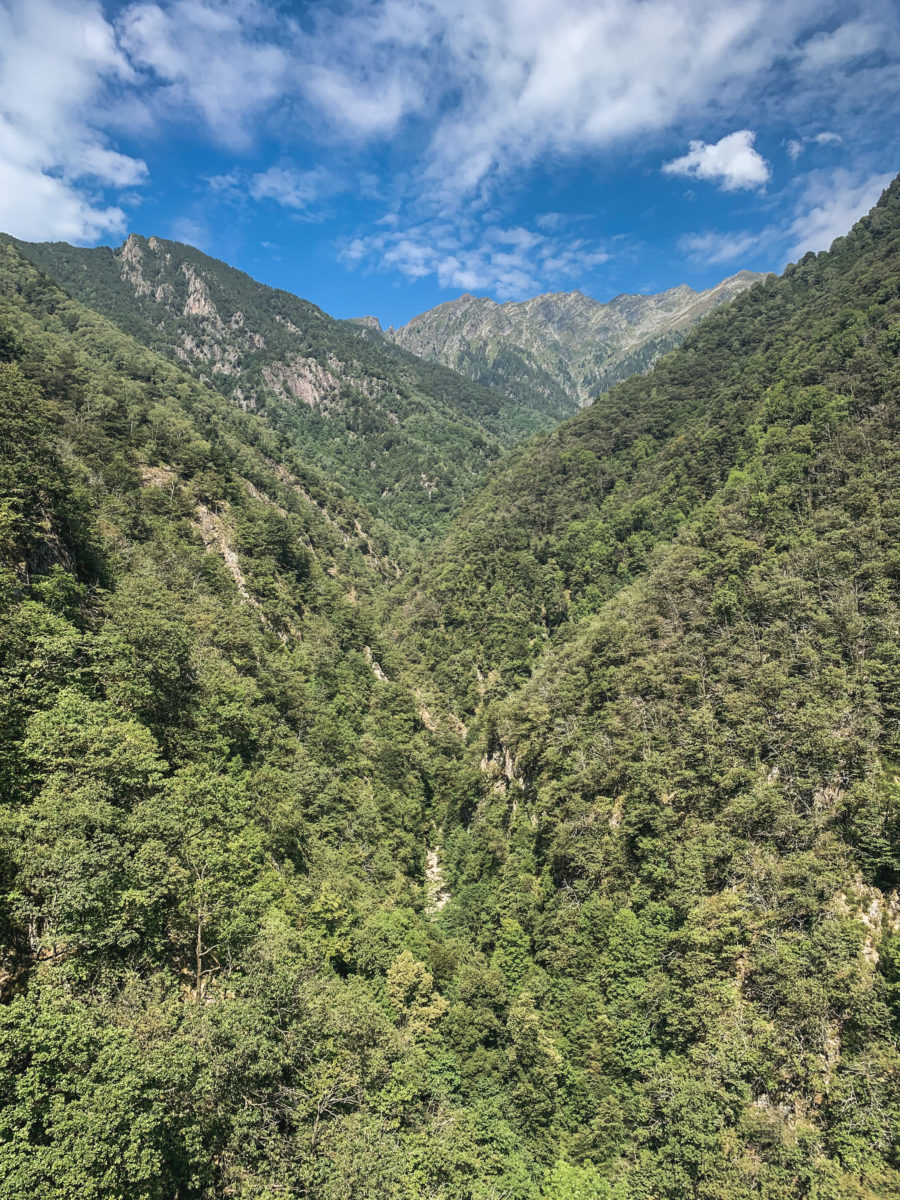

Then, continue your journey towards the hamlet of Curzútt. Before discovering this authentic village brought back to life thanks to a project led by the Curzútt – S. Barnàrd Foundation, observe the magnificent Romanesque church of San Bernardo.
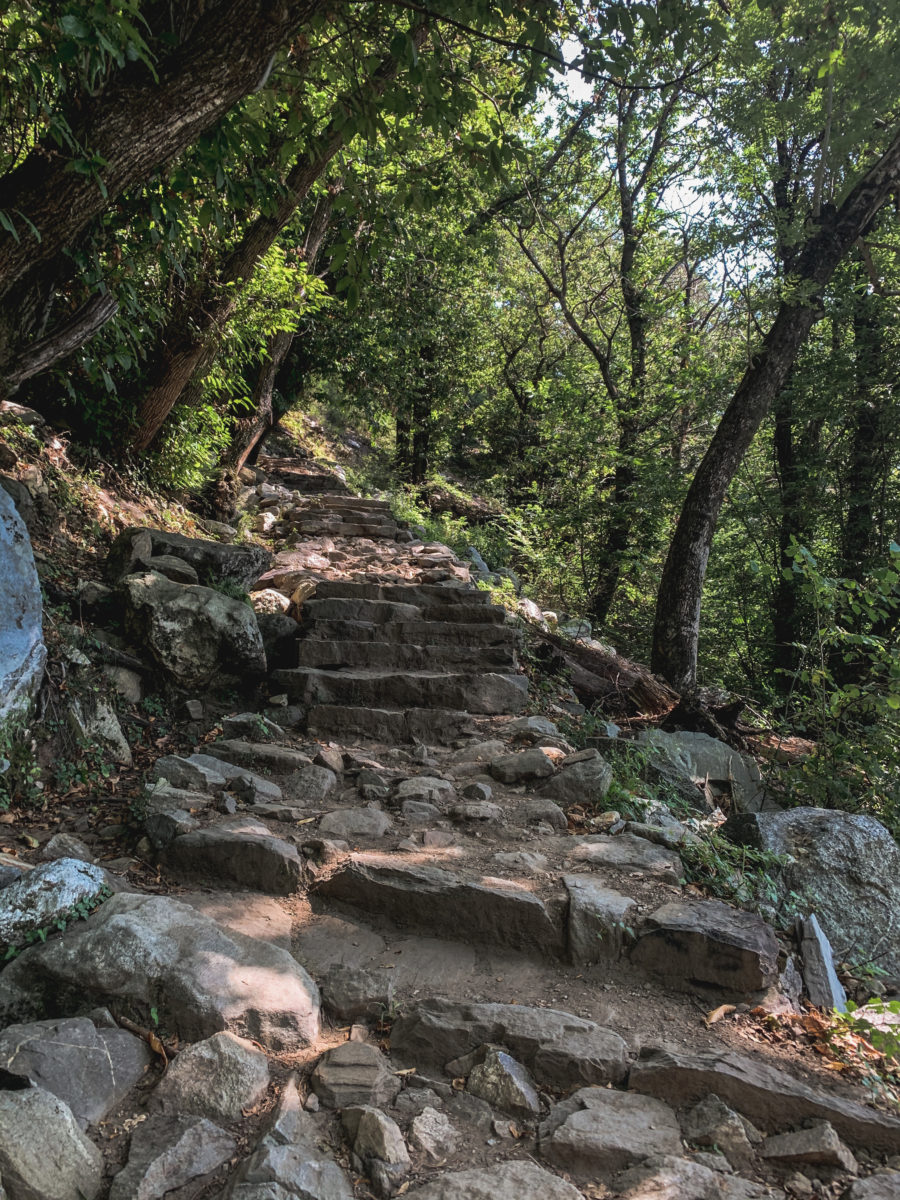

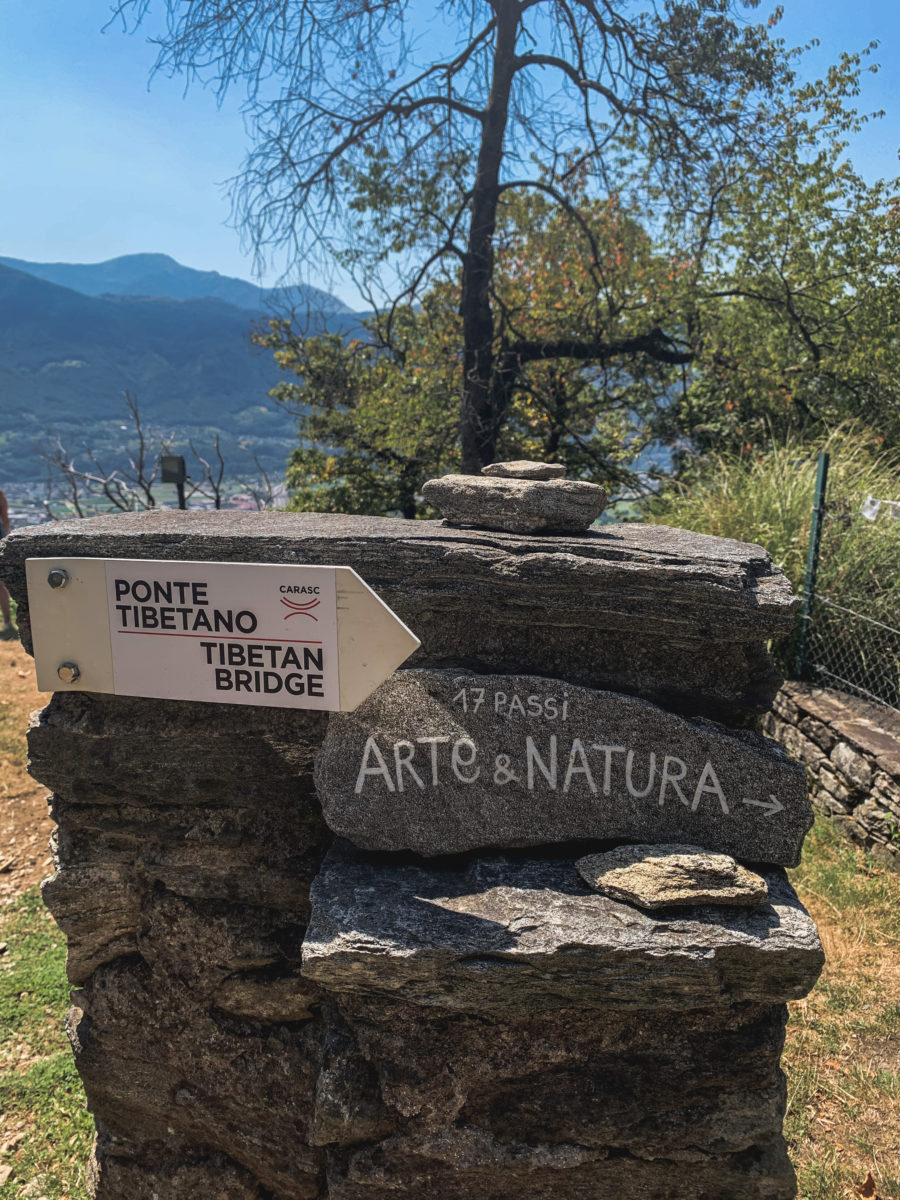
Situated in a splendid position on a balcony overlooking the Magadino plain, the architectural forms of the church are stunning from the outside, but inside is an even greater treasure: a cycle of frescoes that cannot be ignored. However, it is not always open to the public, which was, unfortunately, the case when we visited.

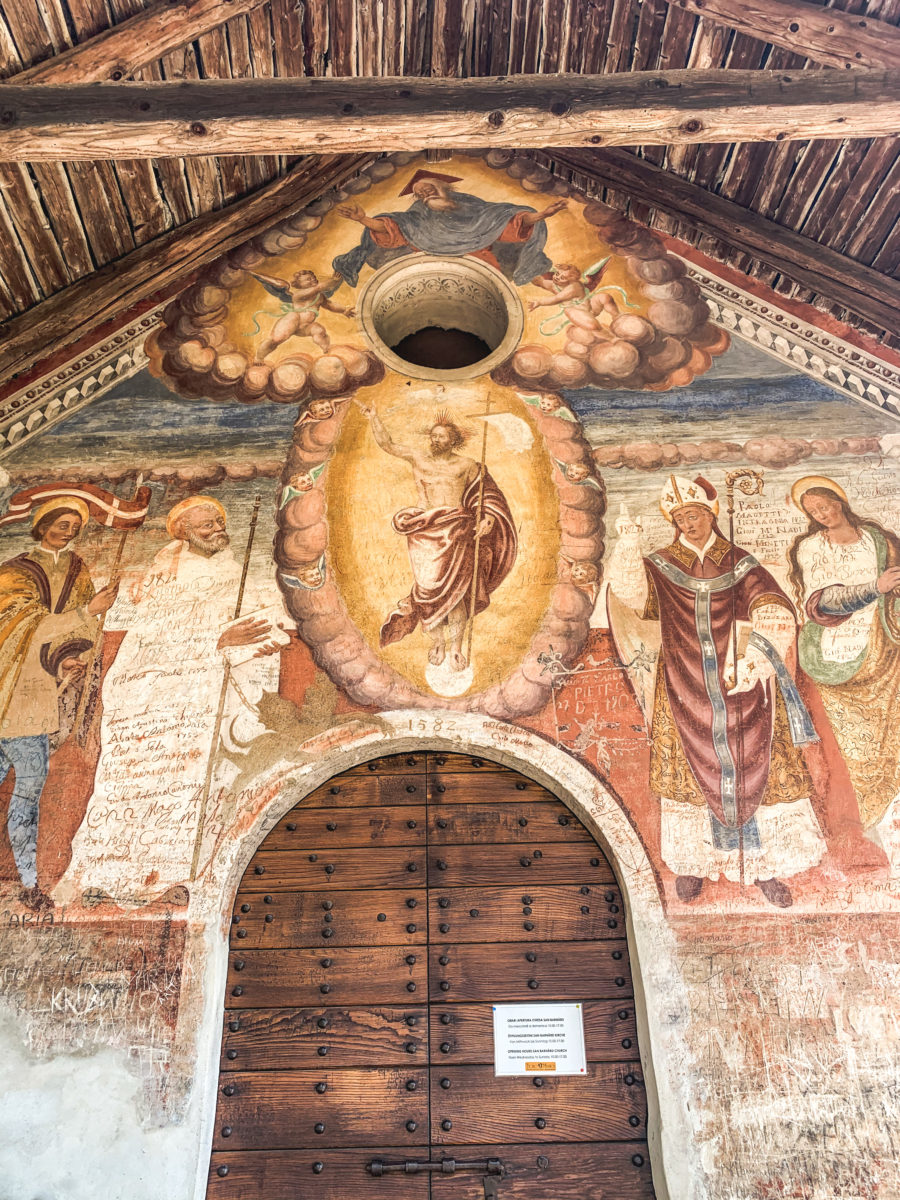
We wandered around Curzùtt for a few minutes, which is really charming and authentic, like the hamlets where the inhabitants of Ticino used to live on the heights.
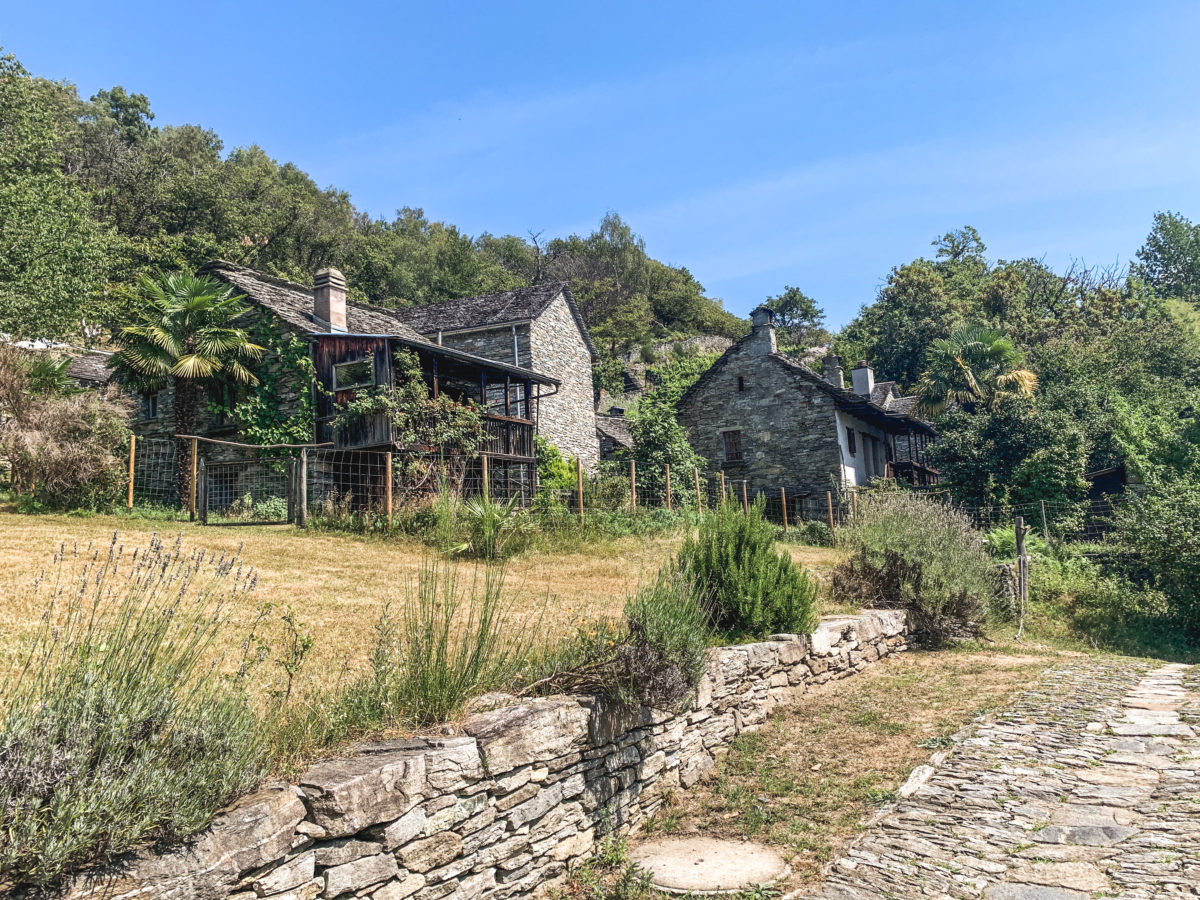
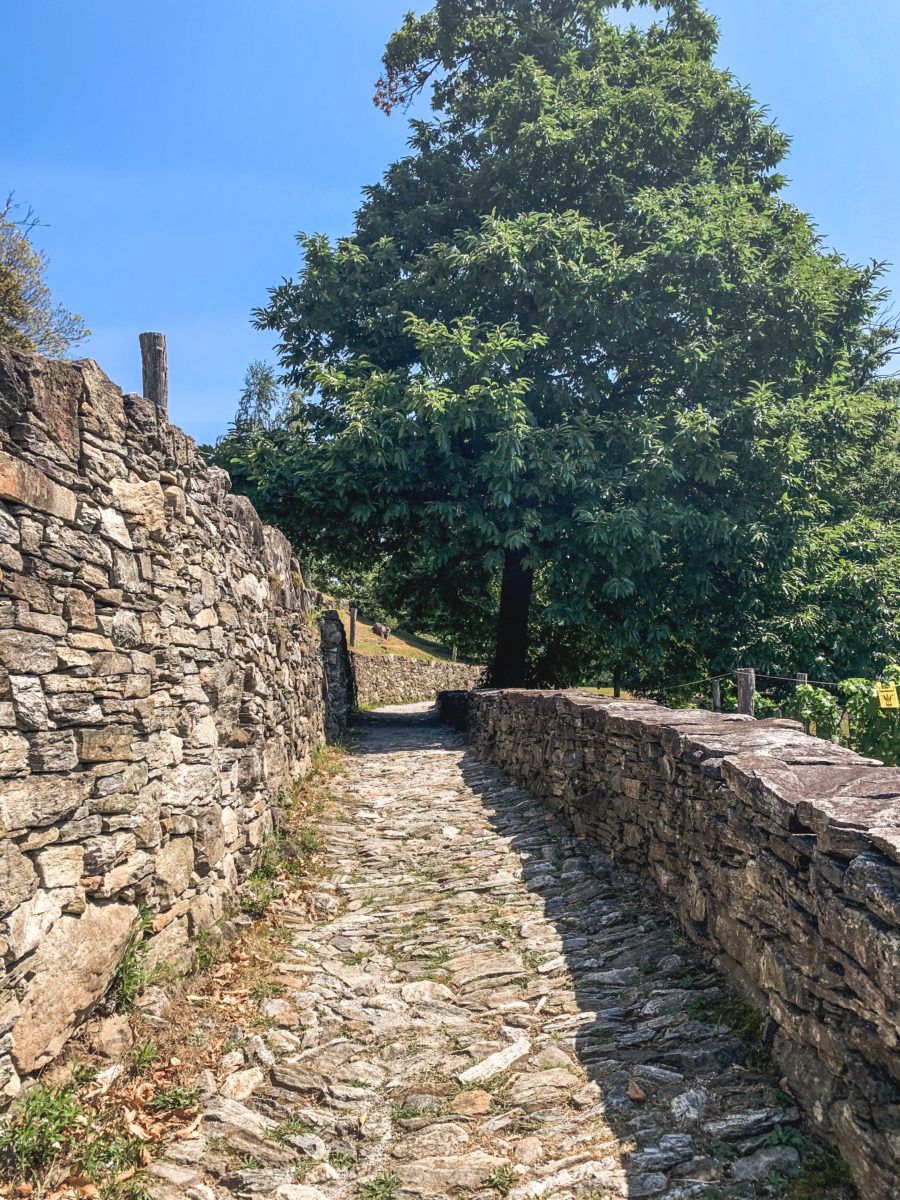
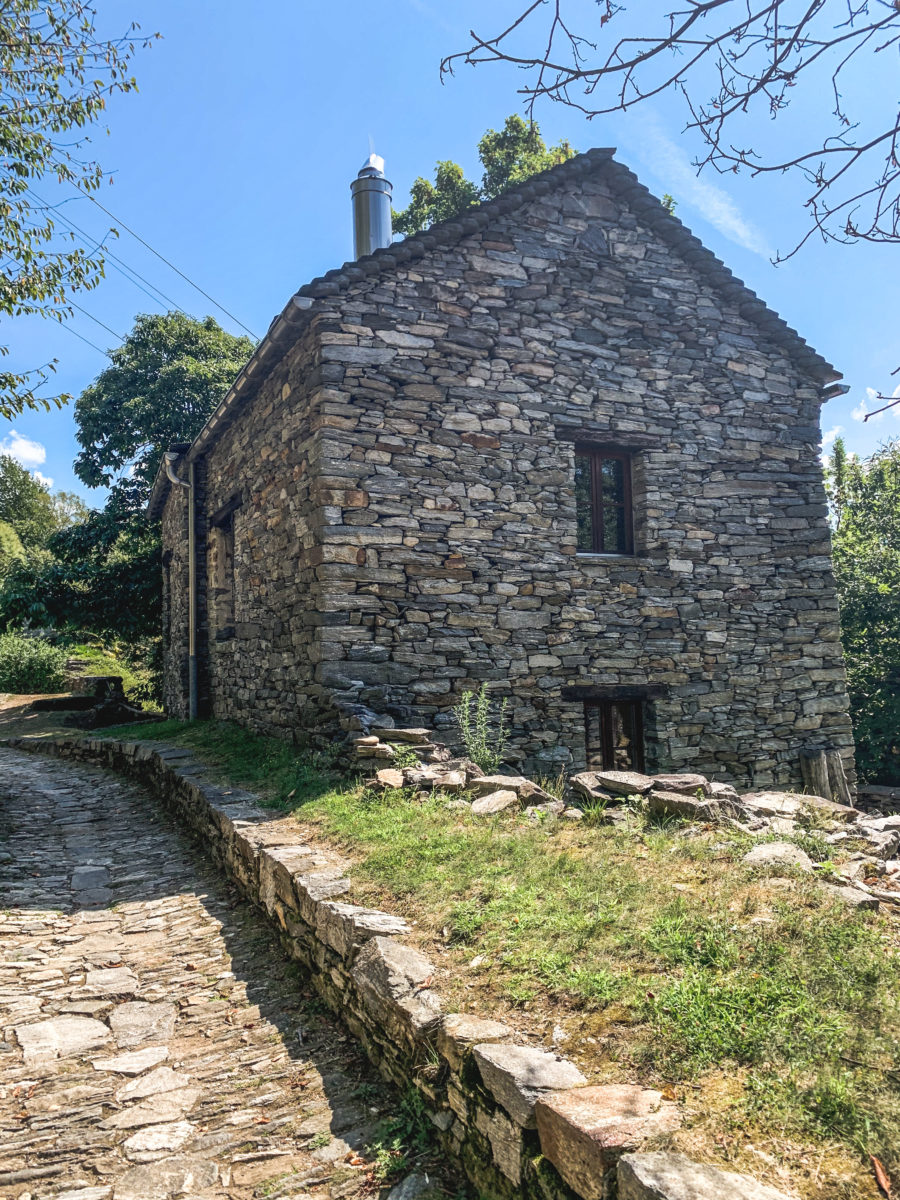
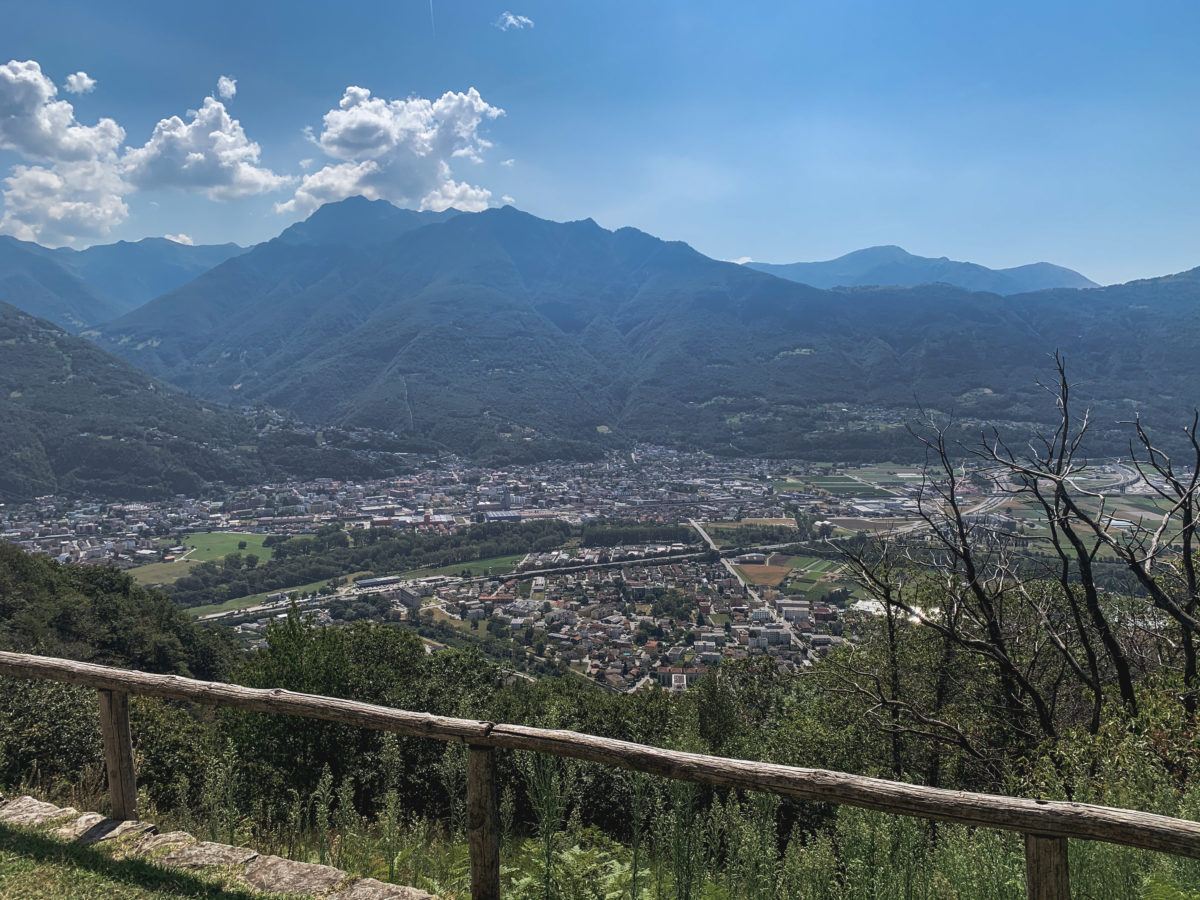
We went to take the cable car and what was our surprise, when we saw that since Curzùtt, it is automated, and it is simply a question of pressing a button to indicate that you want to go down to the plain. I must admit that I was less reassured in this ancient-looking cable car than on a suspension bridge of several dozen metres. Everyone has their own little fears. So check the cable car timetable carefully so as not to get stuck in the heights of Bellinzona at the end of the day. And if this happens, don’t worry, Curzùtt has a good address where you can eat and spend the night.
All the necessary information can be found here.

